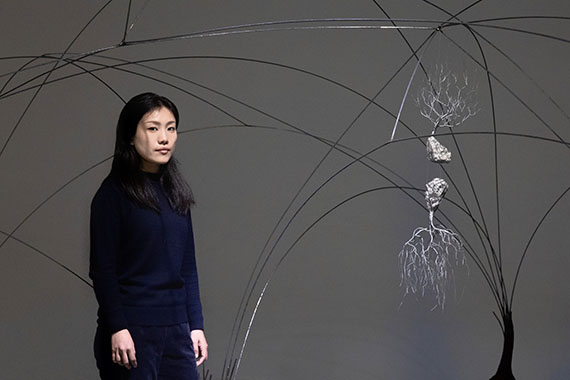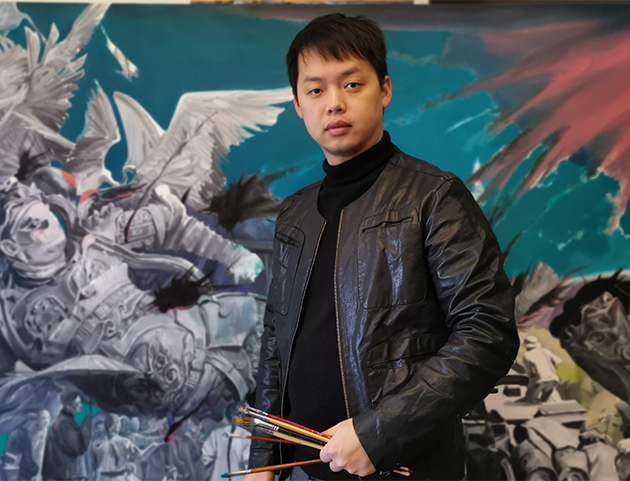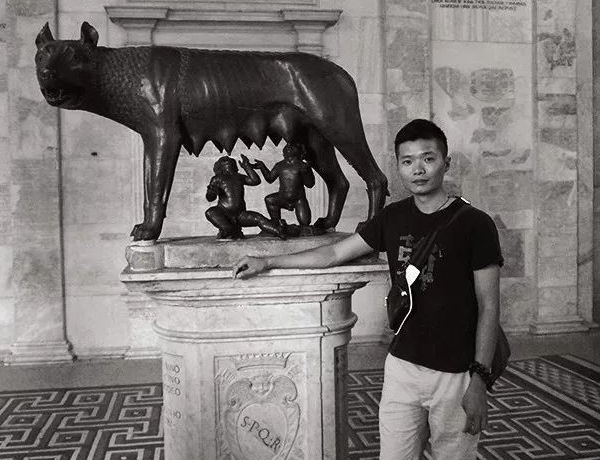青年艺术家 | 江哲
发布时间:2021-01-18
来源:艺术地图


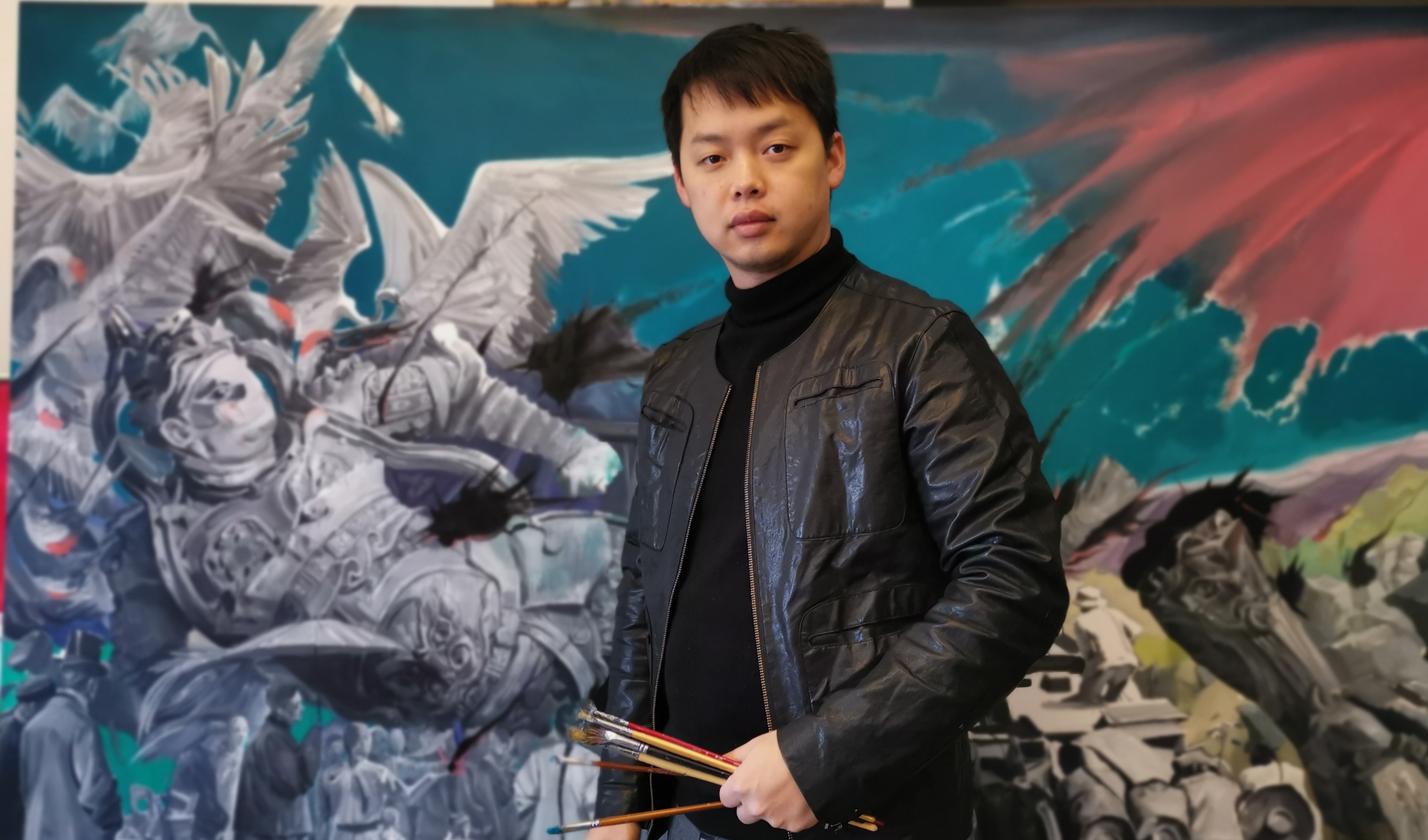
江哲
1990年11月24日出生于广东汕头;2014年广州美术学院油画系学士;2018年广州美术学院油画系硕士;2018年国家艺术基金重大历史题材油画创作班学员;湖南省画院青年画院画家;第一·二届佛山市艺术创作院•佛山画院院聘画家;广东省美术家协会会员;湖南省油画学会会员;广州国家青苗培育计划三期画家。
个展
2018.3.28《盛草青青》/广州市红专厂E5馆
2019.6.29《长夜》/广州市九空间
群展
2020年
作品《深圳速度》入选大美双区一一广东省庆祝经济特区建立40周年美术作品展 中国美术家协会主办 广东 广东美术馆 关山月美术馆(合作)
作品《燃烧我的卡路里》参加湾区好风光一一2020深圳美术馆当代艺术展 深圳 深圳美术馆
作品《新冠镜像》参加“青山一道,风雨共担作品展” 深圳 SHU空间
2019年
作品《利玛窦与<山海经>》入选庆祝中国人民共和国建国七十周年广东省美术作品展 广东 广东美术馆
作品《台下》入选精神·图式——首届中国写意油画双年展 长春 吉林艺术学院美术馆
作品《利玛窦与<山海经>》入选中国SAP艺术大奖,并获年度新锐艺术家奖
作品《郑和下西洋之麒麟来朝》入选时代印记广东省优秀美术作品收藏展 广东 广东美术馆
作品《东学西渐》参加拔萃一青苗计划专家提名展 珠海 诚丰美术馆
作品《辛亥一剥落》参加2019深圳·中国写意油画巡礼 东莞 岭南美术馆 深圳 关山月美术馆
作品《庚子文人独白记》参加湖南省重大历史题材创作展 长沙 长沙师范学院美术馆
作品《抬轿》参加新象·硕实一一青苗计划展 广州 广州艺术博物院
作品参加排云上一一广州画院新锐艺术家提名展 广州 红专厂E5馆
作品《庚子文人独白记》参加风华正茂一湘粤青年艺术家交流展 长沙 湖南省画院美术馆 广州 广东省文联美术馆
作品《奔向海陆丰》入选革命老区红色印记汕尾市庆祝新中国建立七十周年美术作品展 汕尾市 山海艺术馆
系列作品参加无界一广东省青年艺术家作品展 佛山市 佛山市文化馆
2018年
作品《海上丝路一哥德堡号访广州》入选大潮起珠江一庆祝改革开放四十周年全国美展 中国 美术家协会主办 北京 中国美术馆 、广东 广东美术馆
作品《师夷长技以制夷一魏源和〈海国图志〉》参加国家艺术基金重大历史题材油画创作人才培养结业展 湖南 纸本美术馆
作品参加当代佛山2018长三角艺术交流暨佛山美术馆联盟艺术家邀请展 上海 刘海粟美术馆分馆 深圳 关山月美术馆
作品参加虚拟现场一一广州美术学院青年艺术家当代艺术作品展 珠海 圣缘博艺艺朮馆
作品《盛草》参加广州美术学院油画系研究生课程系列展第一期 广州 广州美术学院油画系研究生展厅
作品《救火者》《盛草青青》参加"关系与呈现"——广州美术学院油画系研究生邀请展 ‘广东紫泥堂艺术中心
作品《辛亥一脚步》参加佛山市艺术创作院2017年年展 佛山 佛山市图书馆
2017年
作品《辛亥系列》入选 青衿计划 ,北京 正观美术馆
作品《台下》入选全国80,90五四提名展,长沙 湖南省画院美术馆
作品《庚子年》入选邂逅实验, 深圳 盒子艺术空间
作品《吉祥》《移步》入选ART . 艺界——中国当 代艺术名家精品联展 ,广州 永庆坊
作品《东学西渐》《听》参加第七届广州艺术交易博览会一一谢楚余工作室汇报展 广州 广交会展馆
2016年
作品《台》入选第六届广东当代油画展,深圳 关山月美术馆
2015年
作品《七贤.别》入选列宾美术学院交流展,圣彼得堡 列宾美院意大利展厅
2014年
作品《殇》获广州美术学院油画系星星艺术奖三等奖,广州
作品《七贤.了了生死》获广州美术学院优秀毕业创作奖、衣恋奖学金 、亚广奖学金,广州 大学城美术馆
《船》参加八大美院优秀本科生纸本作品展,武汉
2012年
作品《悟》获首届广东高校油画展铜奖 ,广州 大学城美术馆
作品收藏:广东美术馆、深圳市博物馆、广州美术学院基础部、《收藏拍卖杂志》及私人收藏
清末民初历史的演义传达—— 江哲创作自述
文/江哲
清末民初这段历史从时间上离我们很近,而且有大量的图像和原始材料供我们研究认识,但在空间上又似乎离我们很远。因为一直以来我们总是以革命叙事的方式去了解这个千年变局的时刻。这种方式还是有相对片面性,以至于在很多错综复杂的事件背景面前,我们的认识很单薄,容易变成简单的非此即彼的价值取向。大的历史时势造就了一大批在中国历史上留下璀璨星光的人物,这些人物的不凡人生经历构成了这段丰富的历史。而这里更不乏有很多有争议的人物,而对有争议的人物及其相关事件进行重新探讨就构成我们一个可供描绘和表达空间。
传统的历史题材创作原本是记叙的工具,有的强调史实性,即是对事件发生的“当时”有高度还原性,它需要大量的历史细节和原始文本作为支撑;有的强调史诗性,它也必须具备一定的客观还原度,但在表达上允许存在主观性的表达,最终达到升华主题的作用。然而,当下视觉传达的媒介呈多元化发展。在叙事方面,历史纪录片似乎更具表现力和宣传性。所以传统的叙事性宣传难以满足我们当下历史画的要求。
我这里强调的演义性,即是不用根据客观的历史细节进行某个场面的再现,它的画面不需要大量的历史细节作为支撑。但同样需要阅读大量一手材料,并对历史事件有一个比较立体的了解,然后再根据自己的观点,重新安排人物、地点、细节等构建一个演义性的历史场景。这个历史场景所表达的个人立场不能太强,因为人物和事件本身就是备受争议,表达方式更是需要含蓄且引人思考的。争议性人物在不同的历史阶段得到的评价不同,不同年龄阶段的人对同一历史事件看法、感受皆不同,所以让含蓄的画面呈更多的解读性和思考性就很有意义了。
在老照片里寻找素材是我一种创作方式,以某张我感兴趣的老照片为起点,激发我对某个叙事性的演义性传达。另外老照片的真伪性本身存在一定的问题。中国十九世纪末的照片大部分为外国人所拍摄,拍摄者以一个猎奇者的心态进行拍摄,拍摄对象多为神秘的景观、异国风俗、残酷的刑罚等等。而正是这些图像构成了我们对中国19世纪末至20世纪初的最初印象与认识,所以我才有上述的观点。老照片的素材有一定的问题,它既是当时的客观存在,又具有很强的片段性和主观性,运用老照片进行重合组装再加上一些象征性的符号却能产生另外一些有趣具备思考性的图像。例如,石狮子是我作品中常出现的一个符号,它代表封建社会的一种皇权、威严和神圣,而我把石狮子和袁世凯放在一个画面。袁世凯在近代历史上是个备受争议的人,而导致这种争议的最大原因是他的称帝事件。假如抛开这个事件,我们对袁世凯的认识和评价也会有天壤之别。又或者是我们把他的人生分成几个阶段进行讨论,比如在朝鲜任职,在天津小站练兵,在山东任巡抚,在直隶任总督,在辛亥革命期间任国务总理大臣还有当民国总统。由此便会发现他人生的好多阶段都是积极的,具备改良视野的,但我最终选取的是他称帝前夕的阶段。我把石狮子放得巨大,袁世凯身穿总统服,两者之间是一道门,一道通向权力深渊的门,并取作品名为《移步》。其实也不只袁世凯,多少有雄才伟略之人就因人生最后的错位移步而输了生前身后名,引多少后人感慨。
而关于技艺和方法的使用,我认为先是以表达为出发点进而调整和选取表现手法。由于我不是再现一个客观的历史场景,而是对历史素材进行一个演义性表达,所以在表现手法上,我采取了一些模糊性隐晦表达方式。画里面没有清晰可见的脸部形态,但观者依然能够根据自身的知识结构辨认究竟是哪个历史人物,并且能够根据我虚拟的历史空间对人物的心理状态进行猜测与想象。这种模糊性,有时小至一根边线的表达,人脸的涂绘,大到一个虚拟空间的建构。
An Embodiment of the History of the Late Qing Dynasty and the Early Republic of China—the Artist’s Self-statement by Jiang Zhe
Written by Jiang Zhe
Referring to the timeline, the history of the late Qing dynasty and the early Republic of China was not far from our era with plenty of images and original materials for our research, yet it seemed to be far away when seeing from the space as we have been insisting in understanding the revolutions in a narrative way. It is a relatively one-sided way anyway, that’s why our awareness is superficial and may easily turn into the simple and alternative value orientation. The great historical events created a number of giants whose extraordinary life experiences made up the lavish history in China. Of course, there are also a lot of controversial characters, thus our re-exploration in these people together with their affairs formed into the describable expressing space.
The traditional historical creation is originally a narrative tool, and some of the works emphasize on the historicity, that is to have a high degree of recurrence of the incidents occurred at that moment, which needs lots of historical details and the original texts to serve as the support; and some others lay stress on the epic, yet it should be also based on some specific objective facts though it is conveyed in a subjective way, and ultimately sublimate the theme. However, there is a diversified development of today’s visual communication medium. Like the historical documentary seems to be more expressive and effective when presenting the historical events. Hence, the traditional narrative way is unable to meet the requirements of the history painting today.
The deduction I mention here doesn’t need the recurrence of certain scenes according to the objective historical details or the plenty of particulars to be the support. But to read plentiful first-hand materials are required which will help to build a three-dimensional understanding of the historical events, then you could re-arrange the characters, locations and details so as to create a new historical scene based on your own points of view. As for the scene, the personal position expressed in it should not be too strong as the characters and the events themselves are controversial, it needs to be more implicit and thought-provoking. The controversial figures may gain different evaluations at different historical stages, and people with different age may have various opinions and feelings about the same events, so it is meaningful to present more interpretation and reflection of the implicit scenes.
One of my creation methods is to use the old photographs as the materials, because the pictures I am interested in will inspire me to convey the events in a rhetoric way. But there are problems of the authenticity of the old photo itself. Most of the photographs of the late nineteenth century were taken by the foreigners with curiosity, thus what can be seen through their lens were more about mysterious scenes, exotic customs and cruel penalty etc. It is exactly these images that constitute our initial impression and understanding of China in the 19th century the early 20th century, and that’s why I have the above opinions. The old picture has certain issues, it is, on one hand, an objective existence at that time, and on the other hand, it also has strong fragment and subjectivity. By reassembling the old photos as well as coinciding with some symbolic symbols, it can be turned into other interesting and thought-provoking images. For example, the stone lion is a symbol that frequently appearing in my works, which in my opinion represents the imperial power, majesty and holy in the feudal society, yet I put the stone lion together with Yuan Shikai in the same painting. Yuan is a controversial person in the modern history, and the biggest reason for this controversy is his emperor’s event. If without this event, we may have totally different awareness and evaluation of him. Or let’s divide his life into a few different stages of discussion, such as working in North Korea, training in Tianjin station, serving as the inspector in Shandong, working as the direct minister in Zhili, holding the post of prime minister during the Revolution of 1911 and president of the Republic of China. Seeing from these facts, we will find these are all positive with improved vision, but I finally choose the time before he became the emperor as the material. I amplify the stone lion, and Yuan Shikai is wearing a presidential service, there is a door to the abyss of power between them. I named it as “Move”. In fact, there is not only Yuan Shikai, but many other giants lost their fame owing to their final wrong move, arousing people’s regret.
When it comes to the use of skills and methods, I think the expression is the starting point, then is the adjustment and the selection of manifestation. As I am not representing an objective historical scene but syllogistically expressing the historical materials, I choose the implicit expression. There is no clearly visible face seen in the picture, but the viewers can easily identify who it is according to their own knowledge structure, and they can also assume and imagine the psychological state of the characters referring to my virtual historical space. Such kind of ambiguity can be used to present a tiny sideline, the painting of a human face to the construction of a big virtual space.
作品欣赏
认知与变革系列

《庚子文人独白记》570X145CM 布面油画 2018年
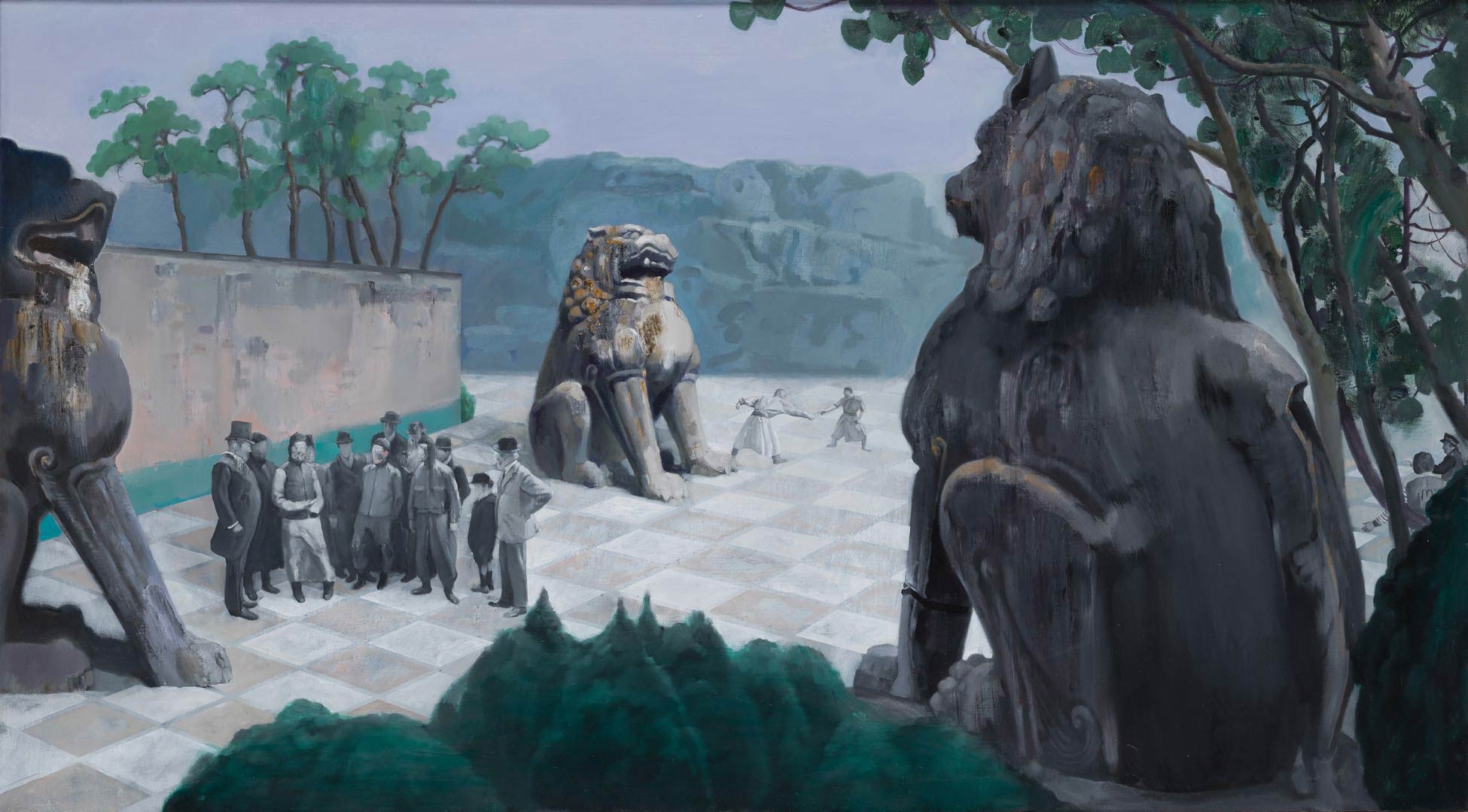
《东学西渐》180X100CM 布面油画 2017年
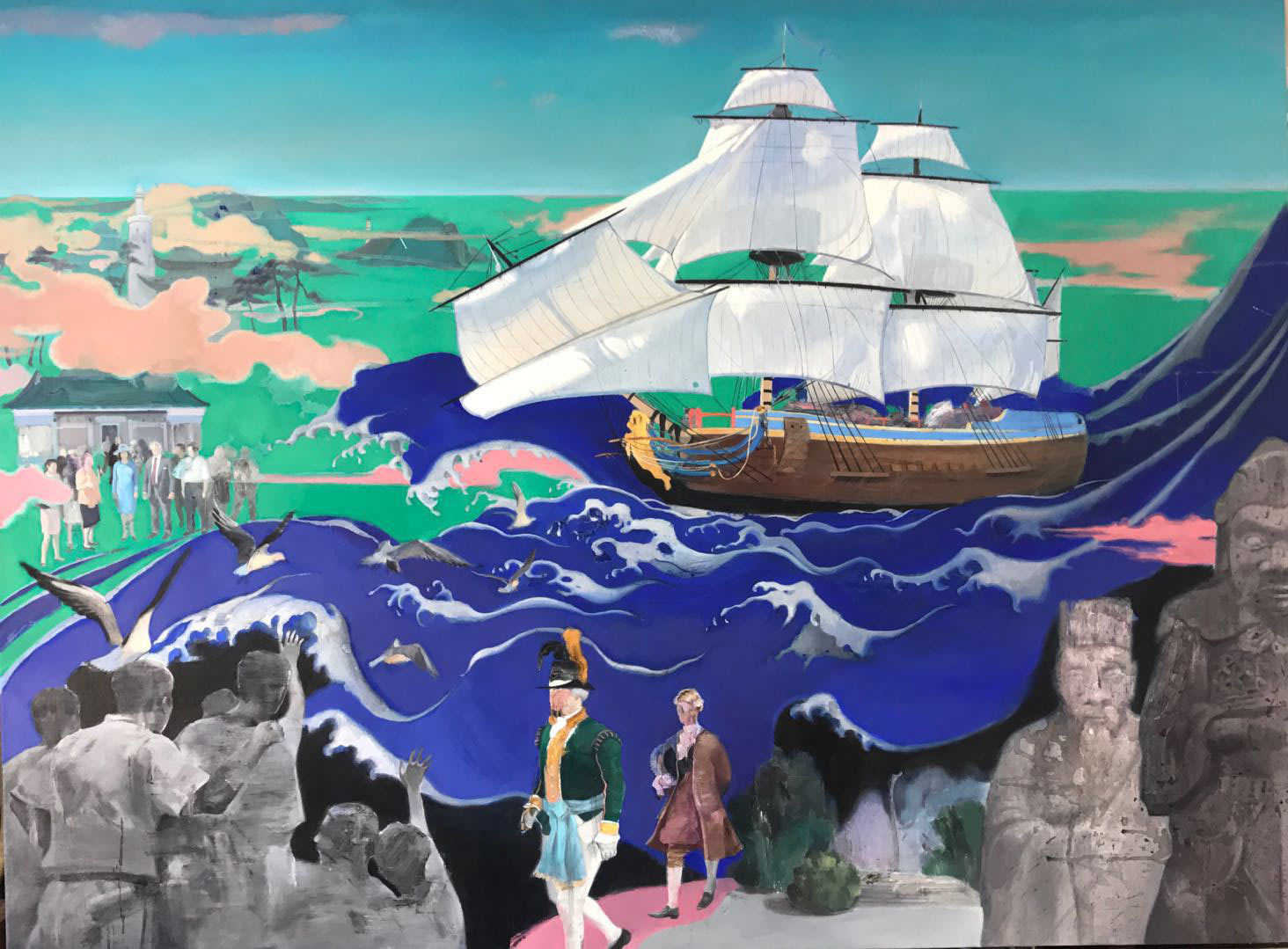
《海上丝路一一哥德堡号访广州》197X145CM 布面油画 2018年

《开眼看世界一一魏源与海国图志》352X103CM布面油画2018
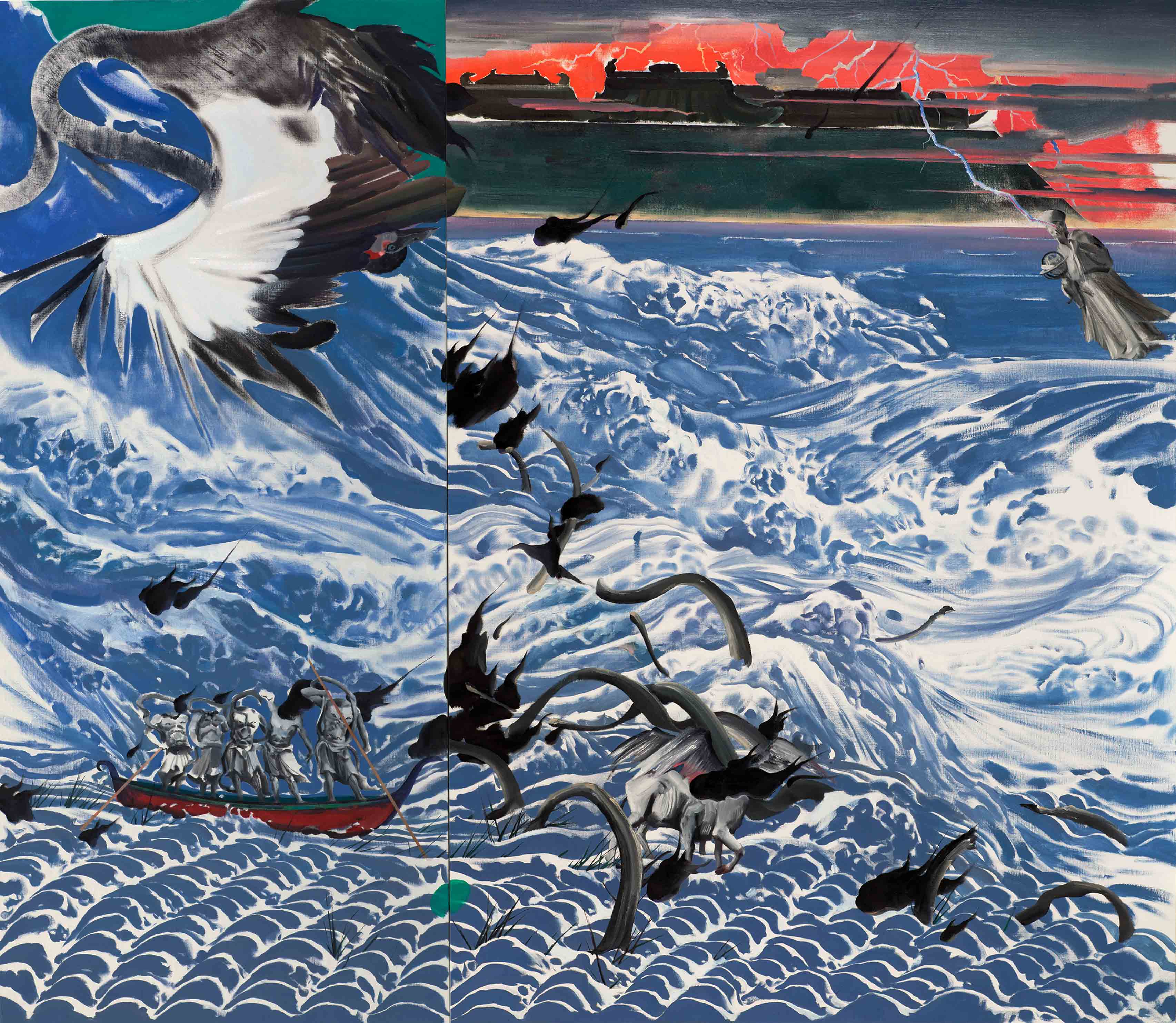
《利玛窦与山海经》171X150CM布面油画2019
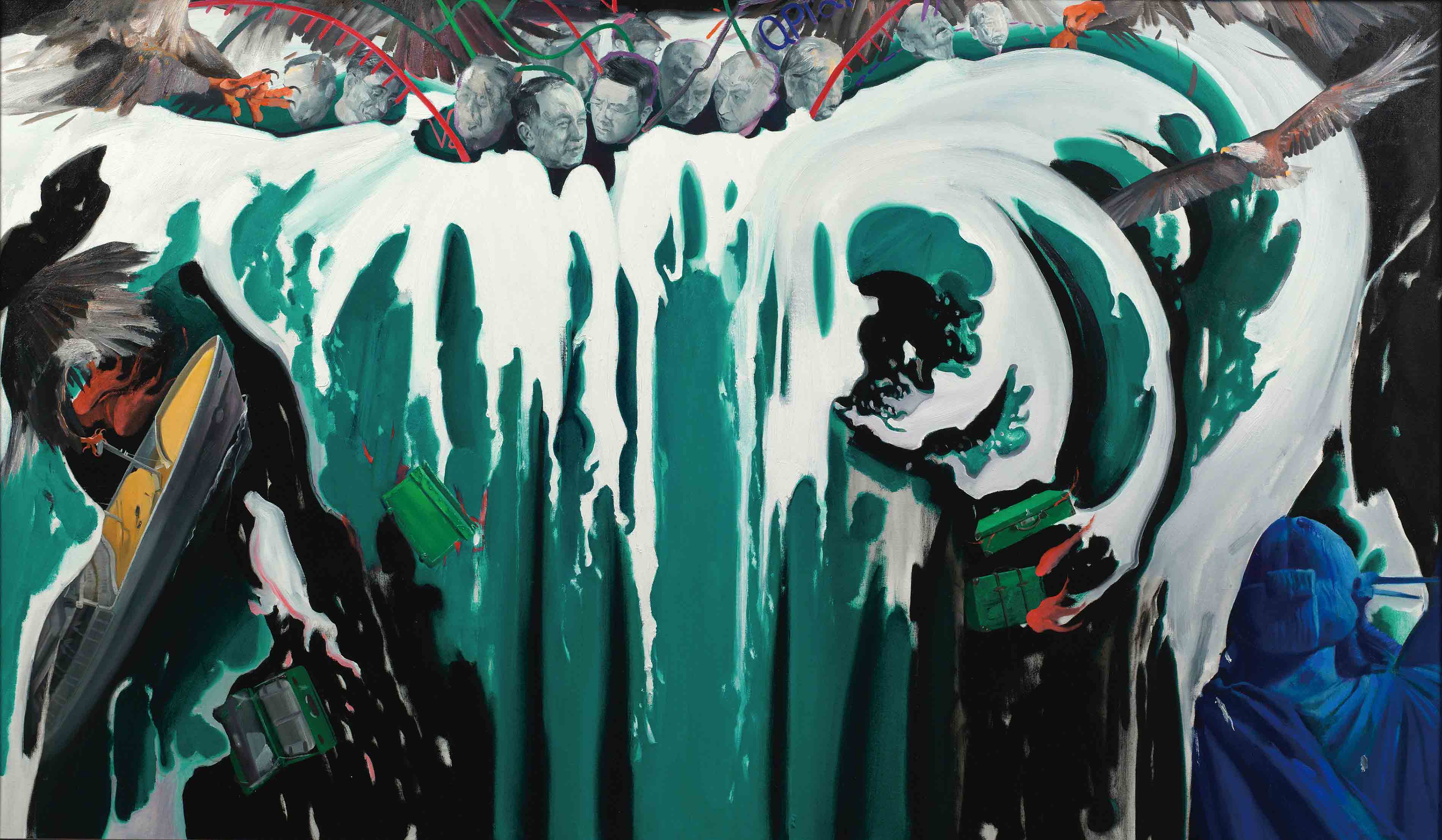
《去国与归国一一克利夫兰总统》176X103CM 布面油画 2019
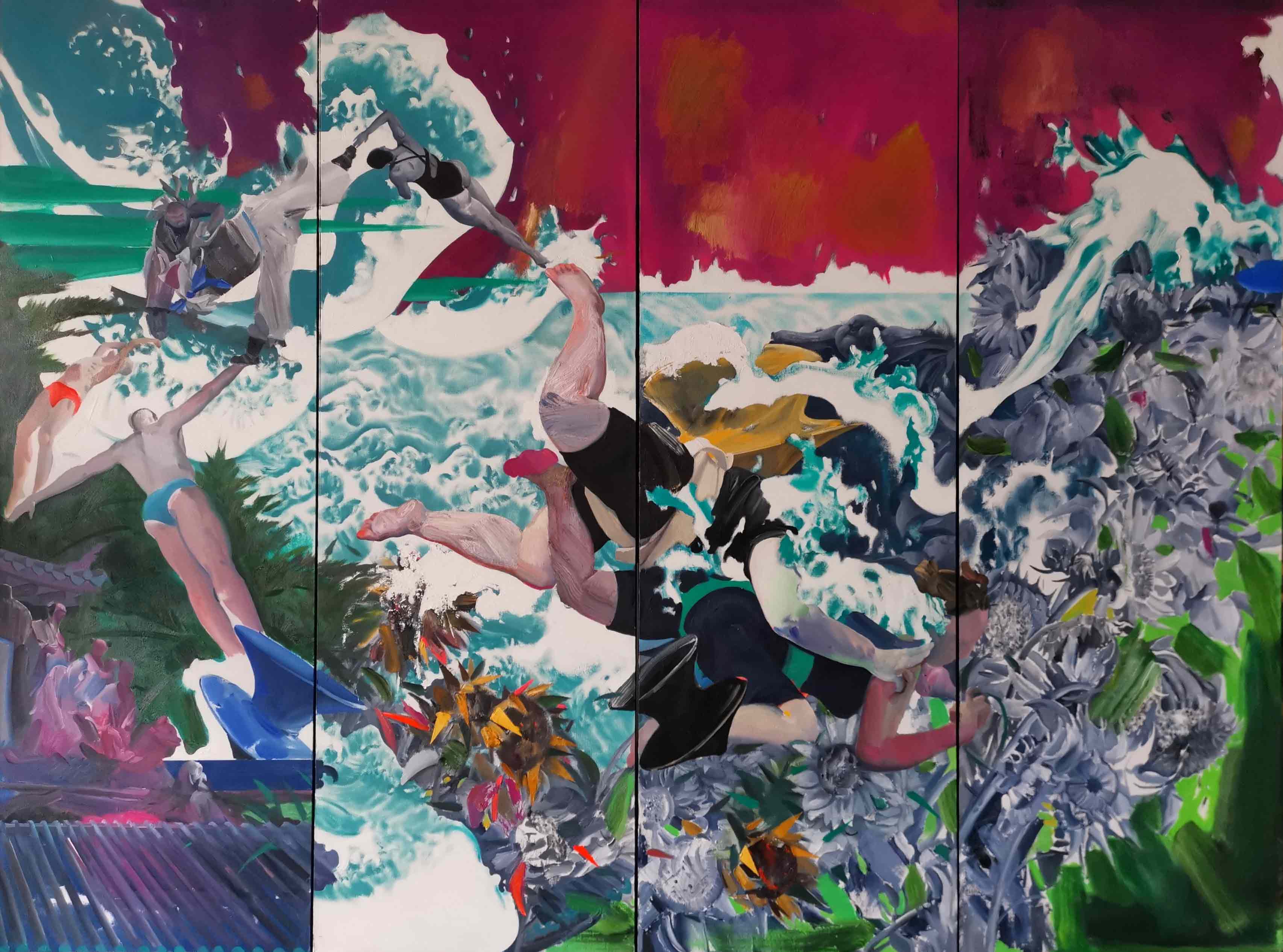
《燃烧我的卡路里》192X145CM布面油画 2020年
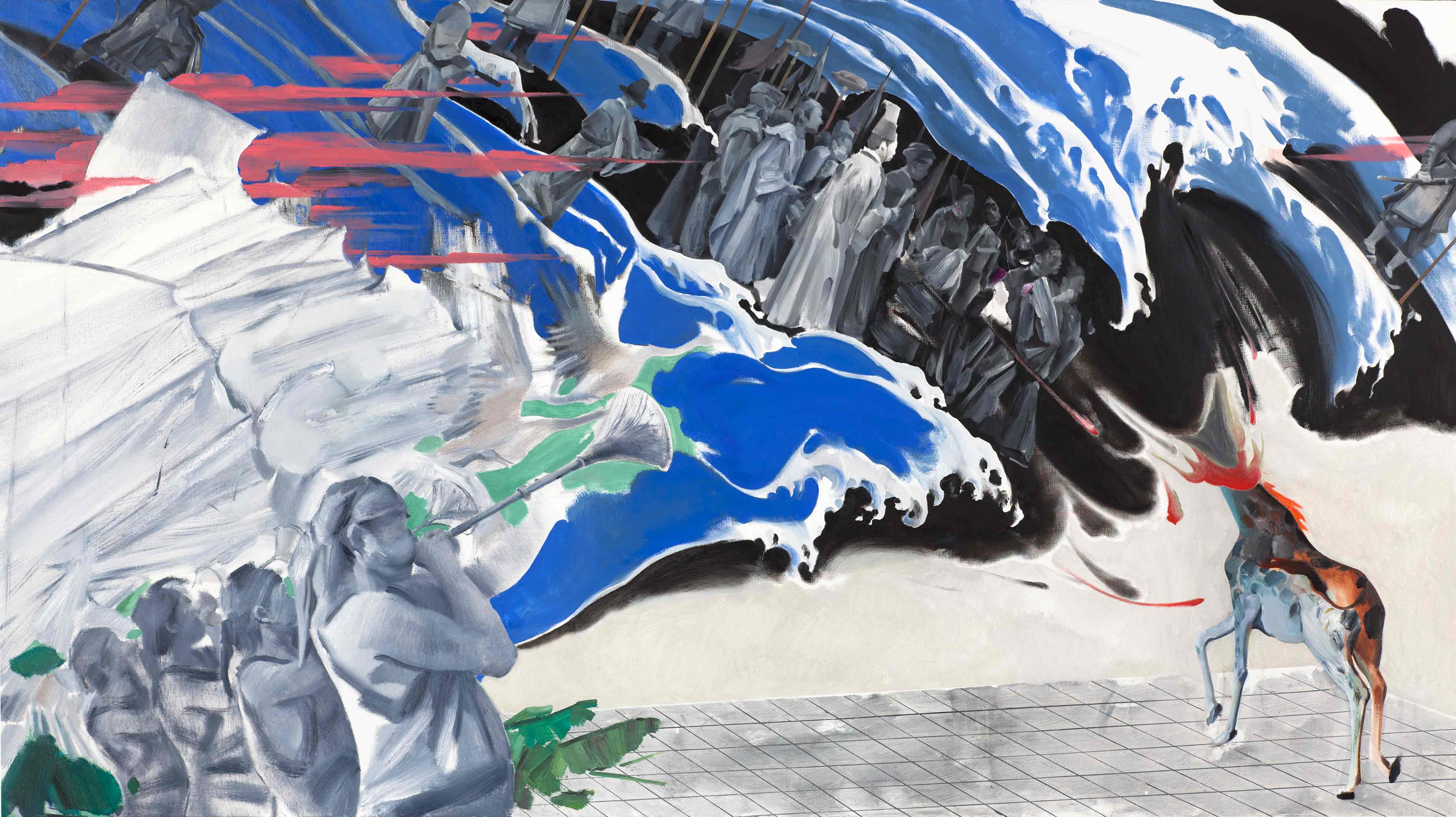
《郑和下西洋之麒麟来朝》176X103CM布面油画2019
盛草青青系列
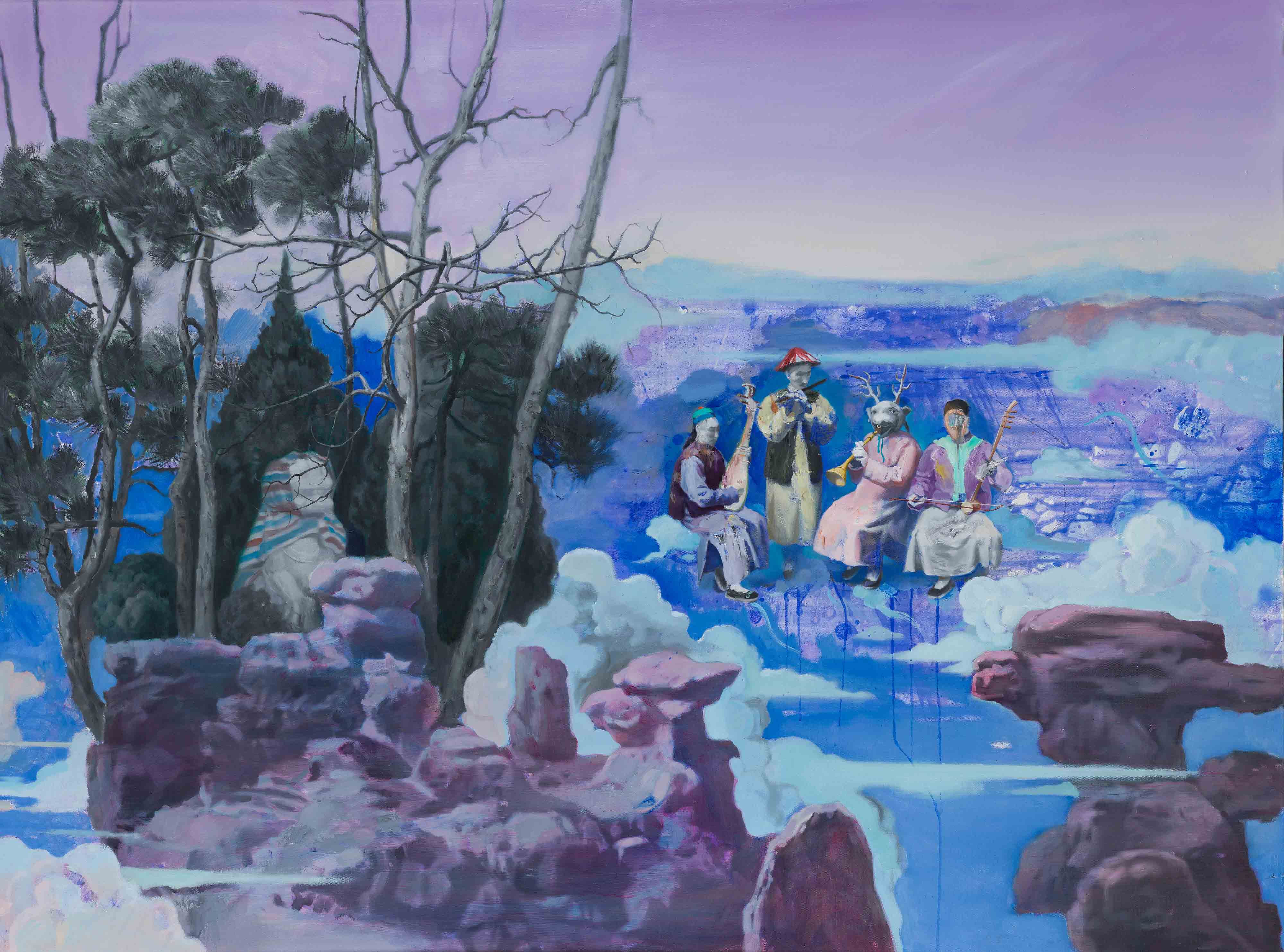
《粉墨登场》120X160CM布面油画2017年
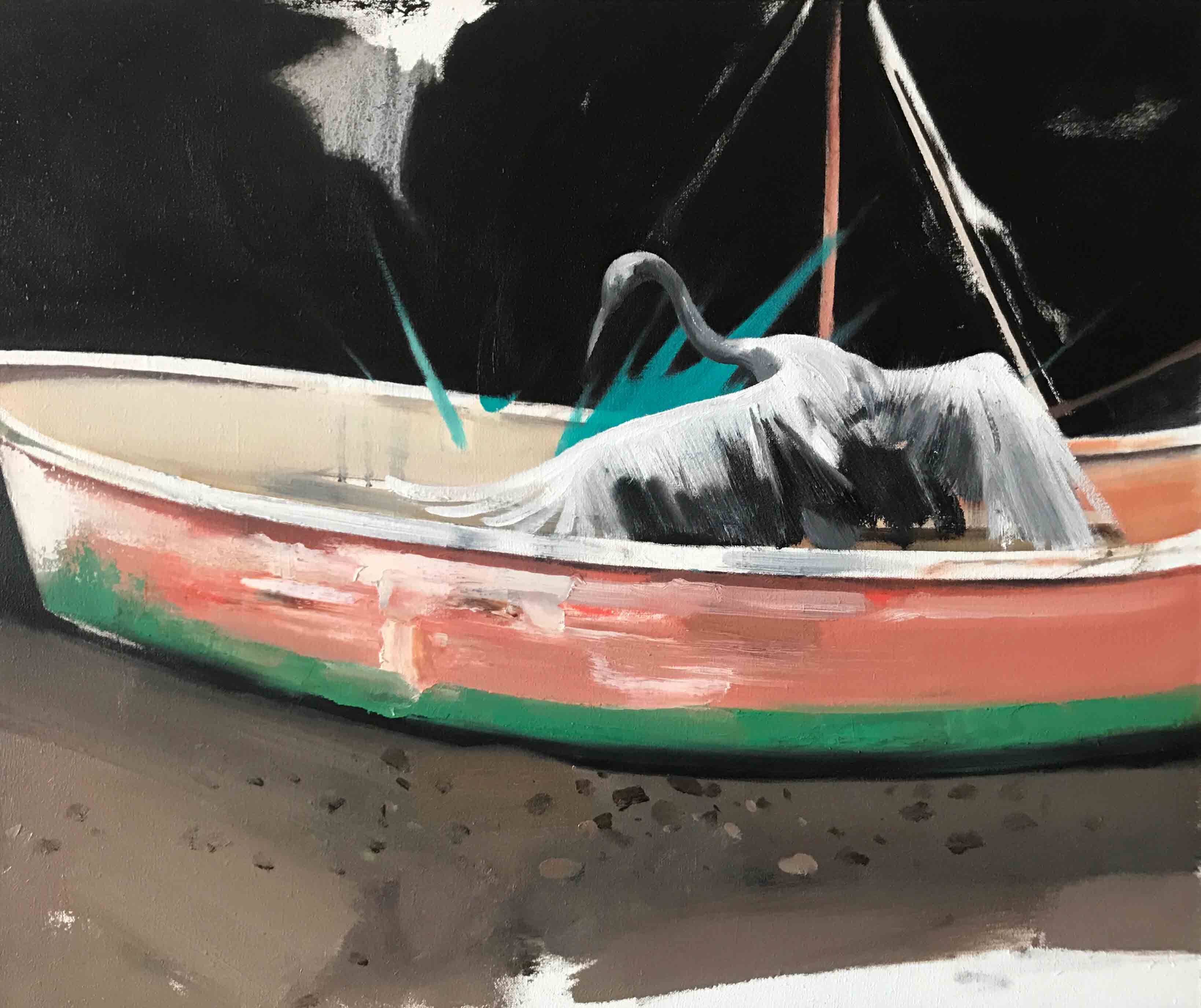
《搁浅》50X60CM布面油画
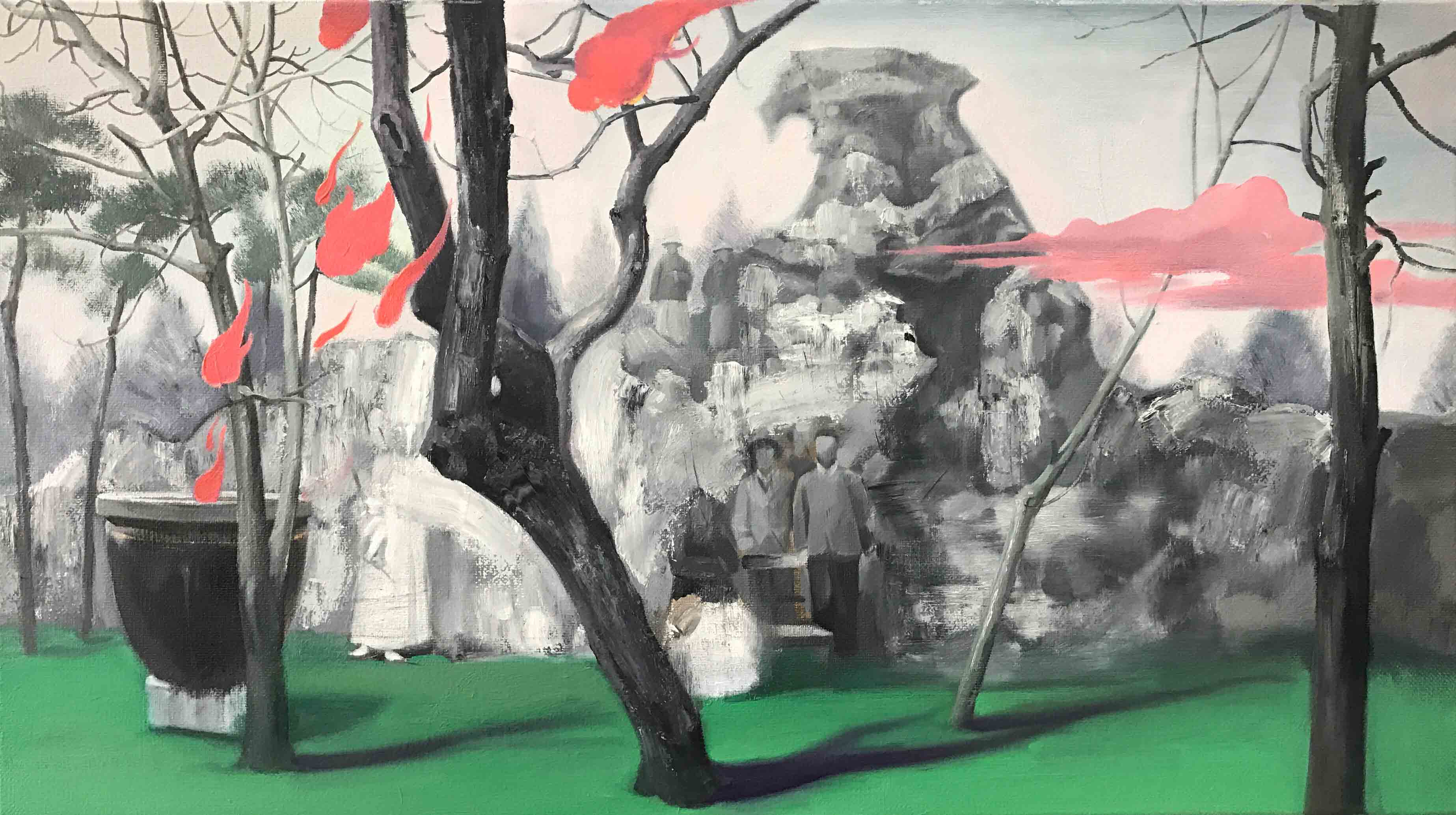
《隔岸观火》70X40CM布面油画2018年
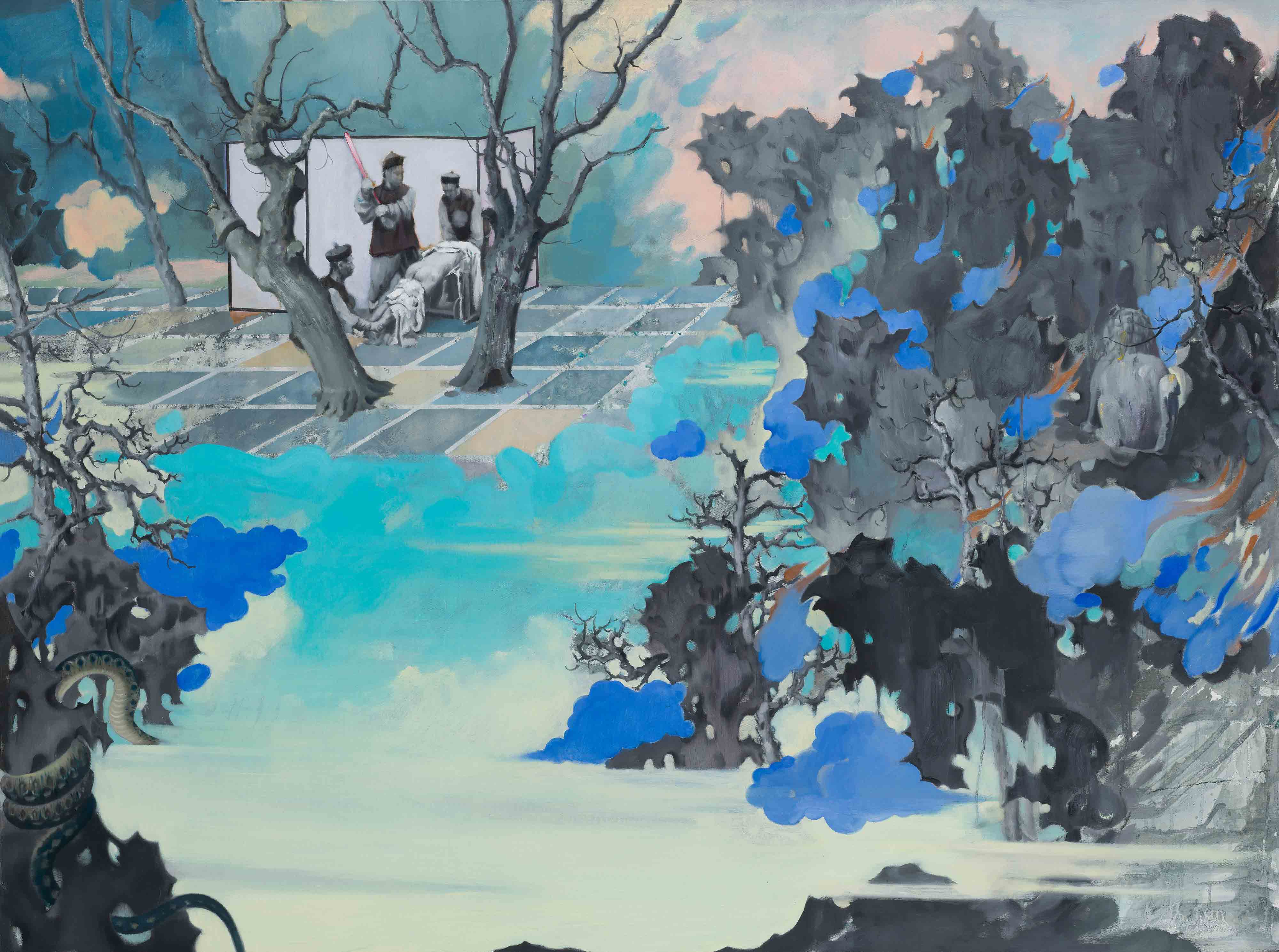
《庚子年》160X120CM布面油画2017
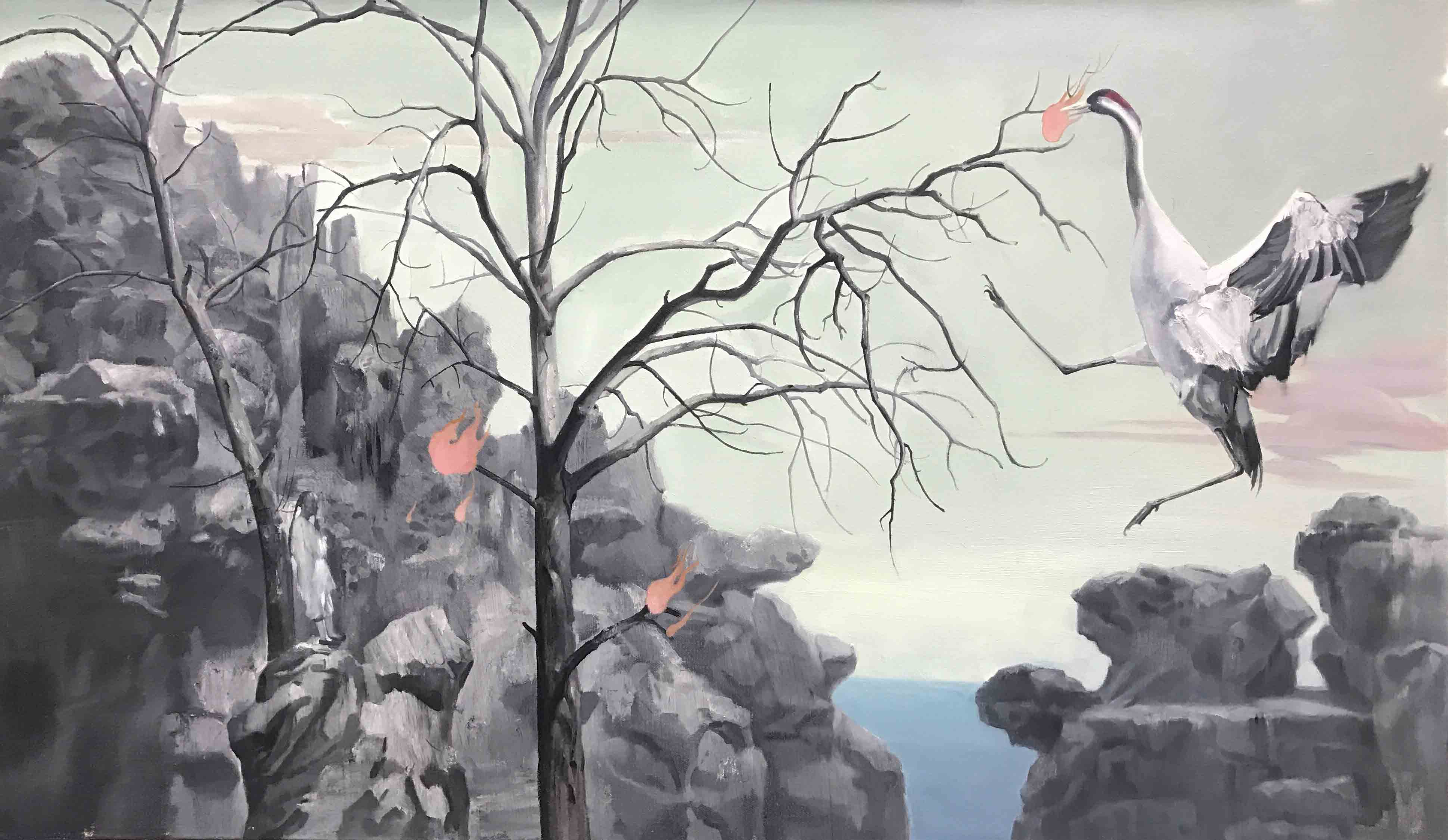
《救火者》120X70CM布面油画2018年
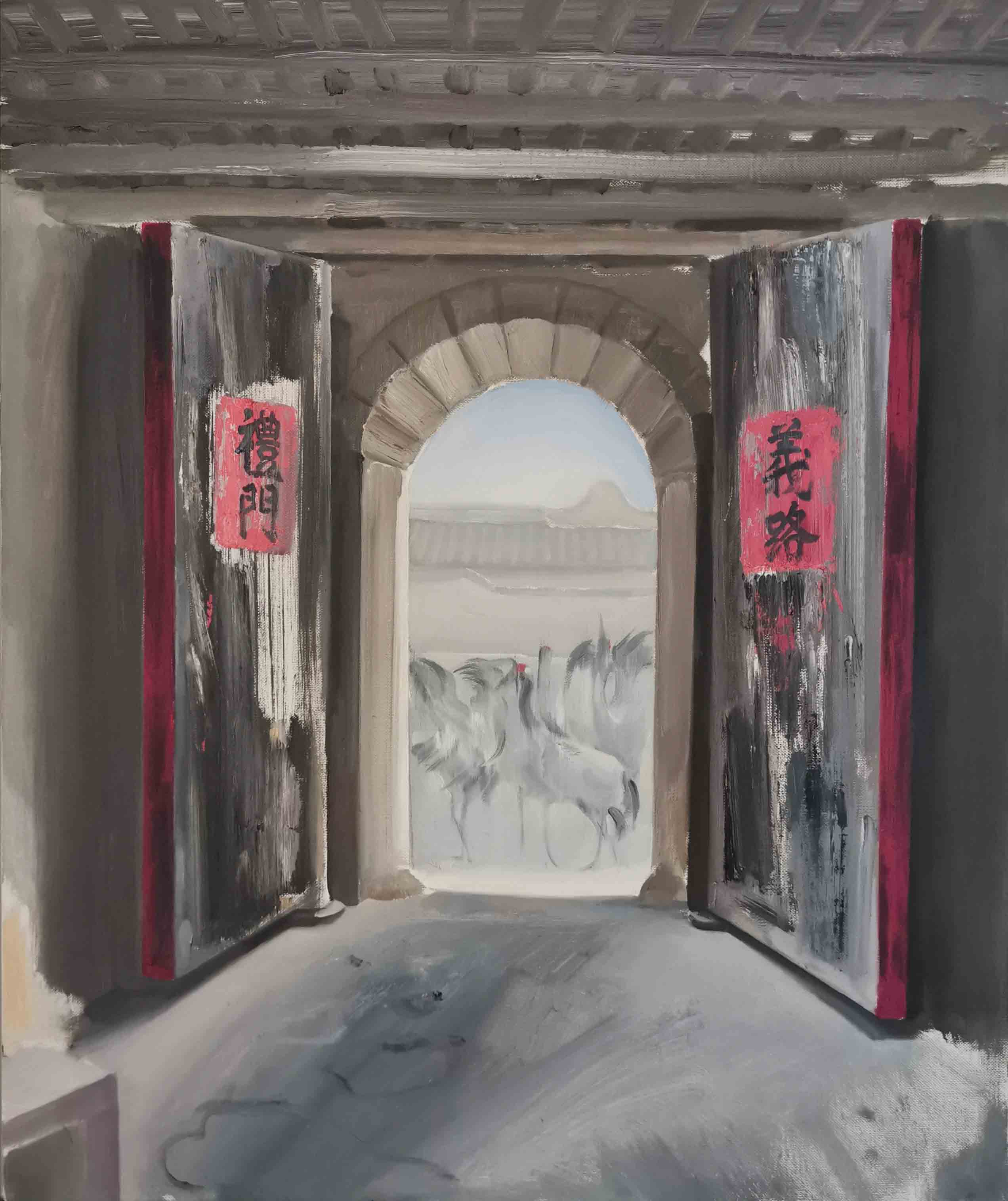
《礼门义路》50X60CM布面油画2019年
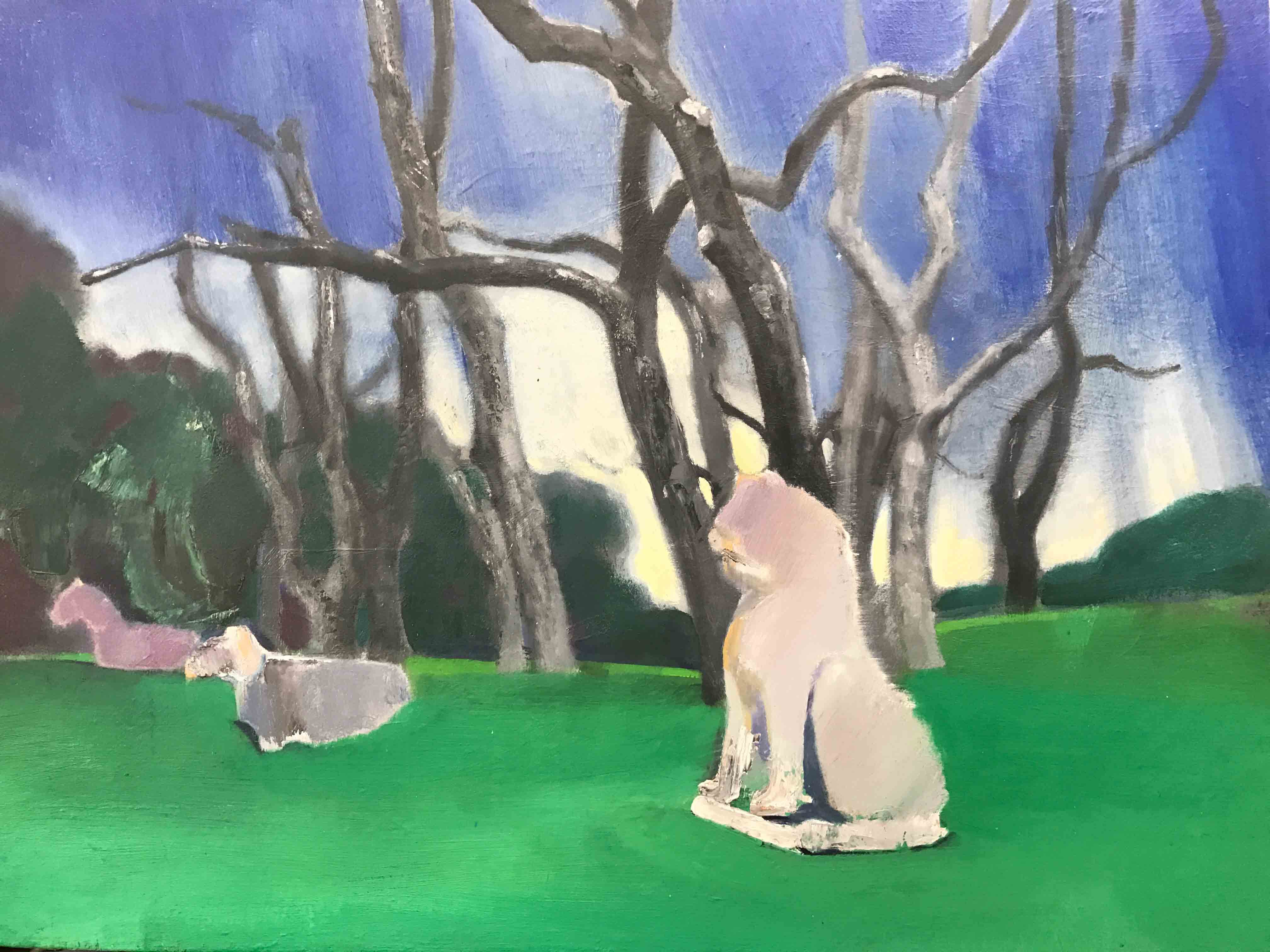
《盛草》60X45CM布面油画2017年
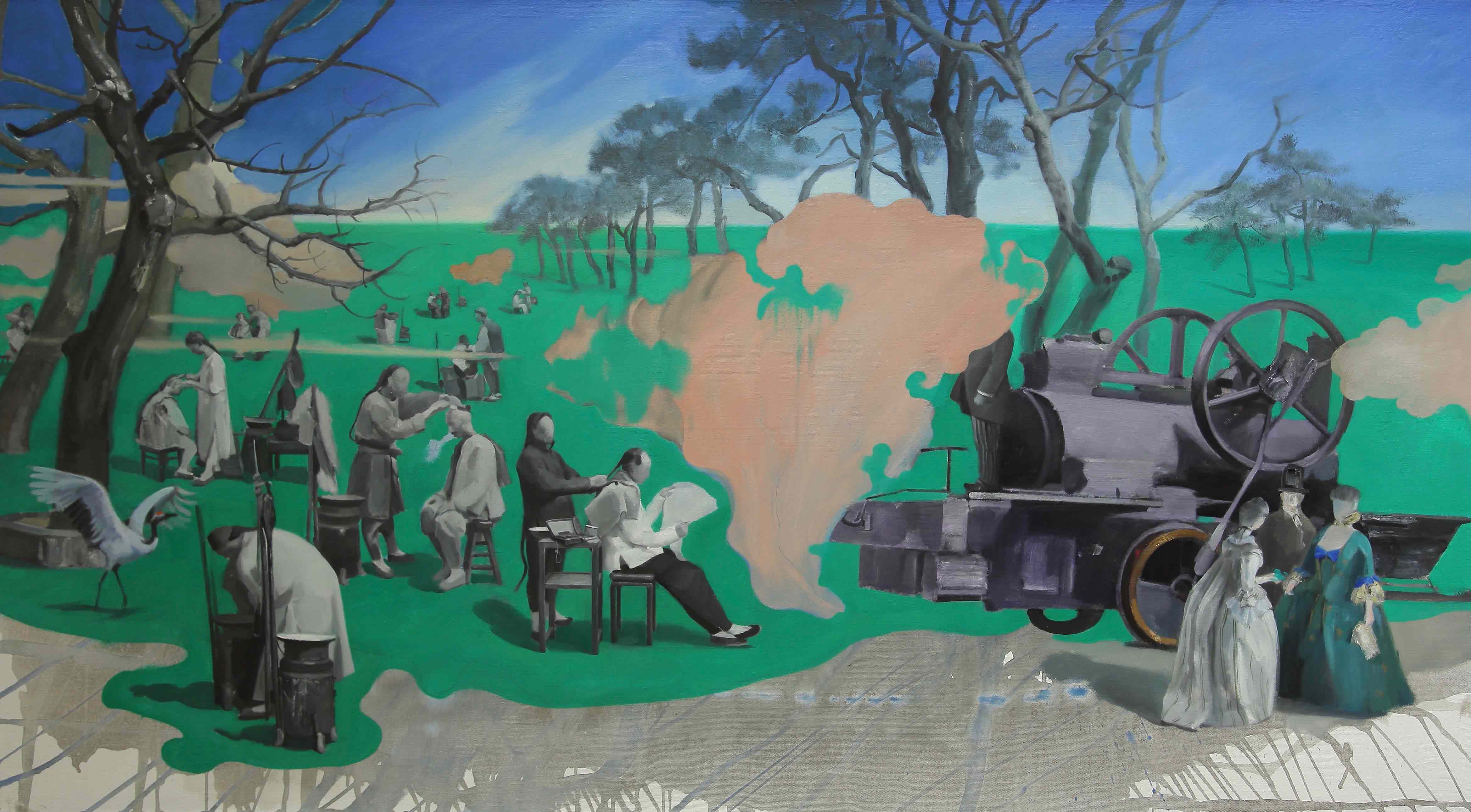
《盛草青青》180X100CM 布面油画 2017年
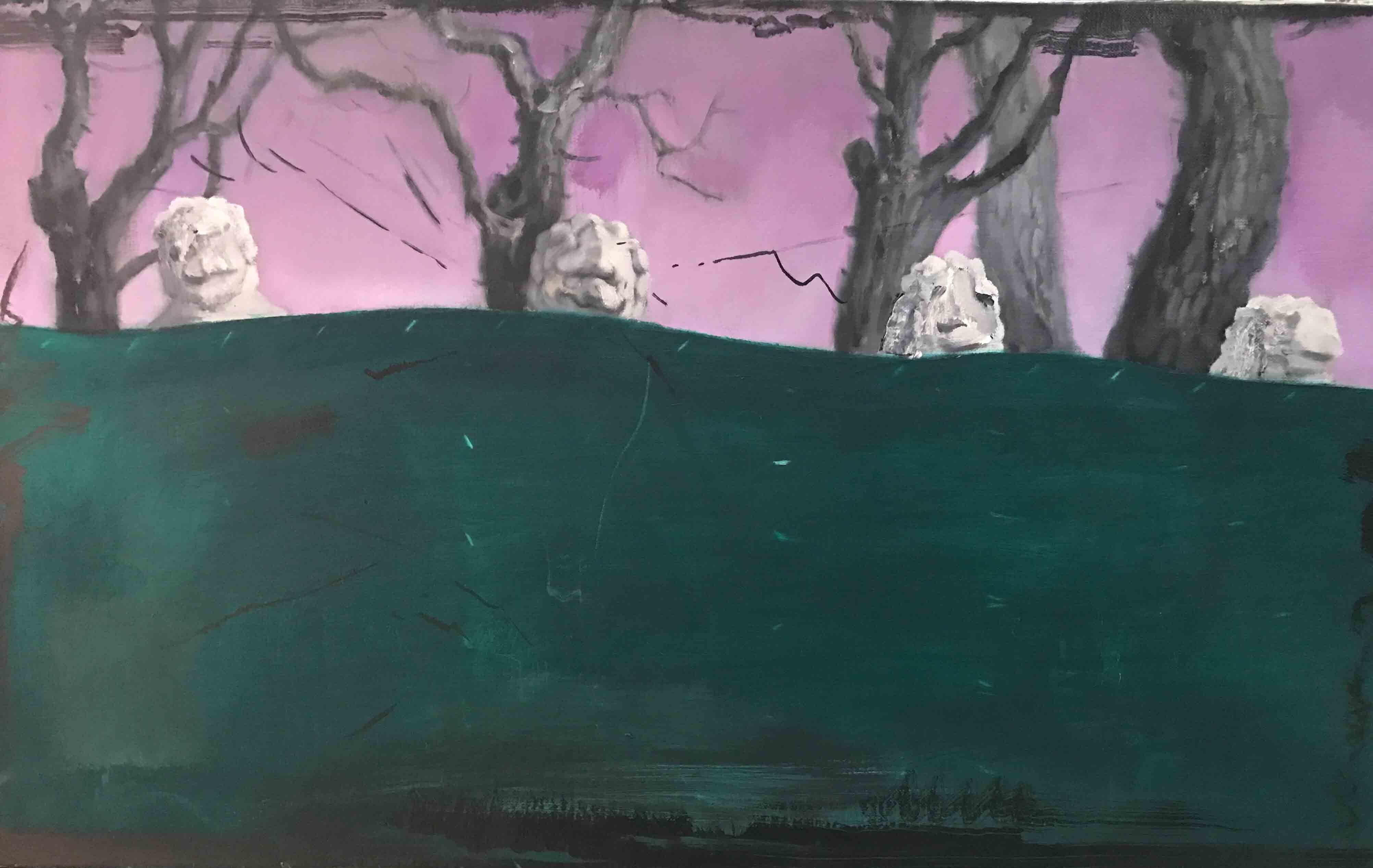
《四只狮子》80X50CM布面油画2017年
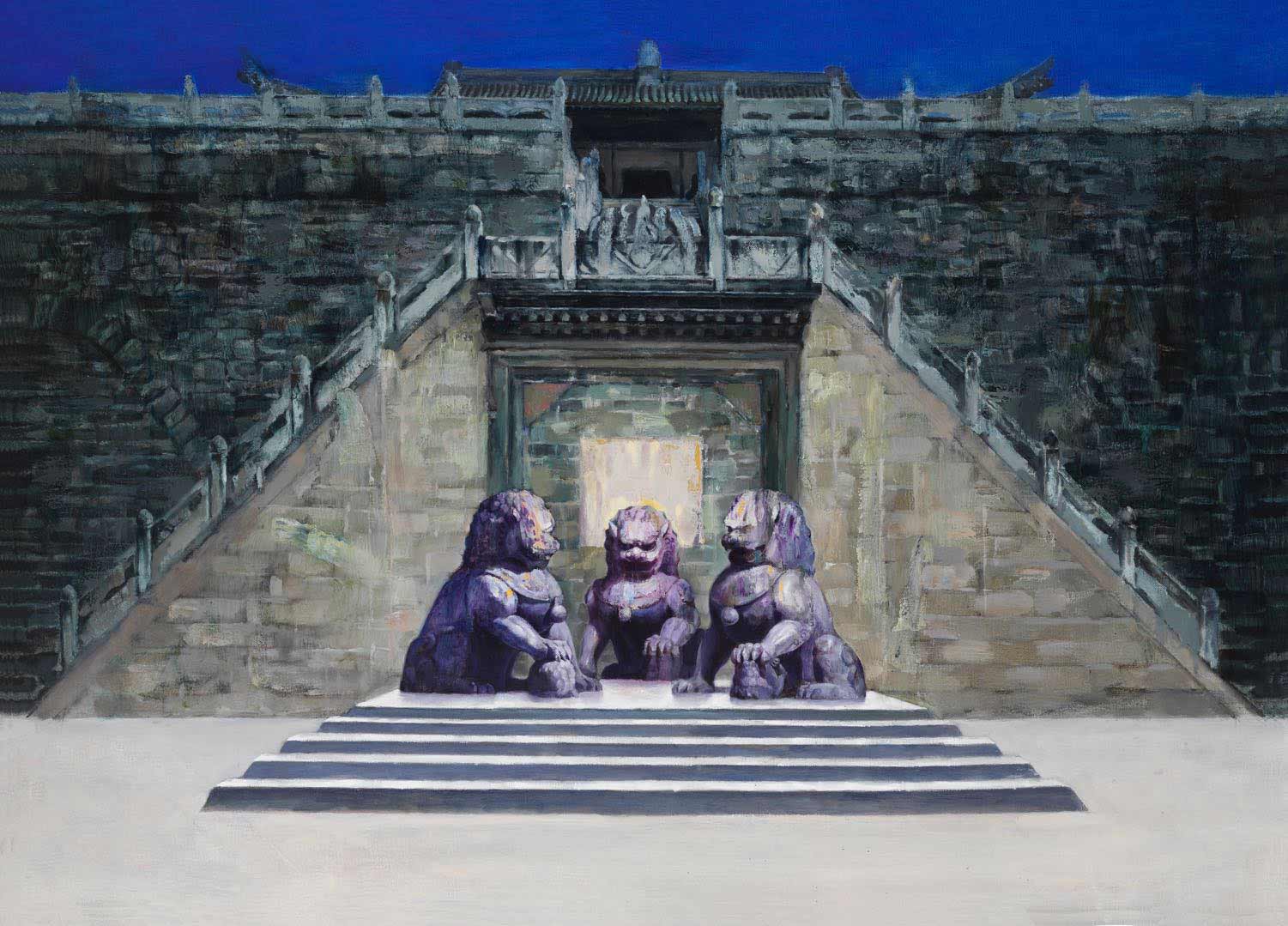
《台》120X90CM布面油画 2016年
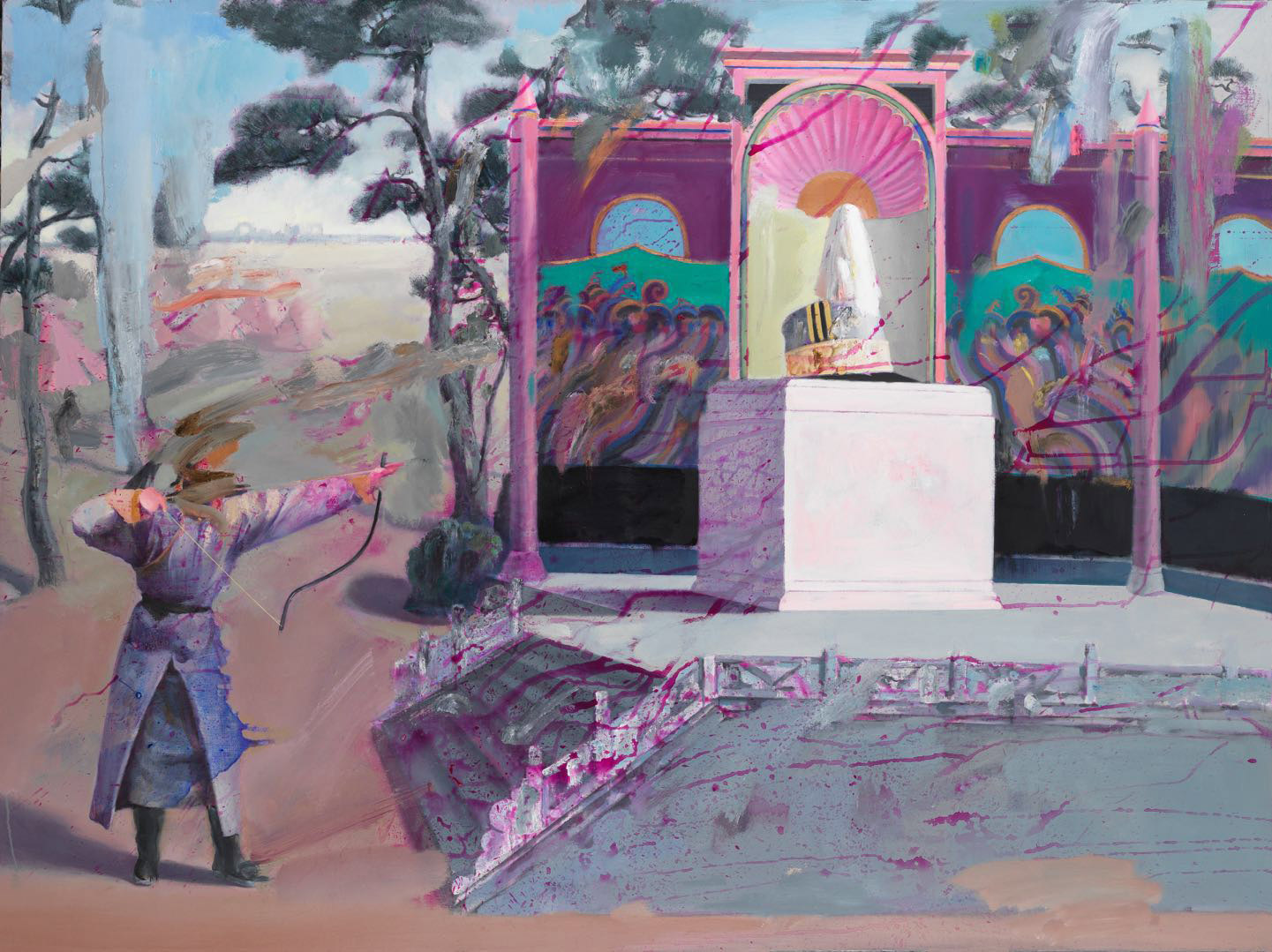
《台上》160X120CM布面油画 2017年
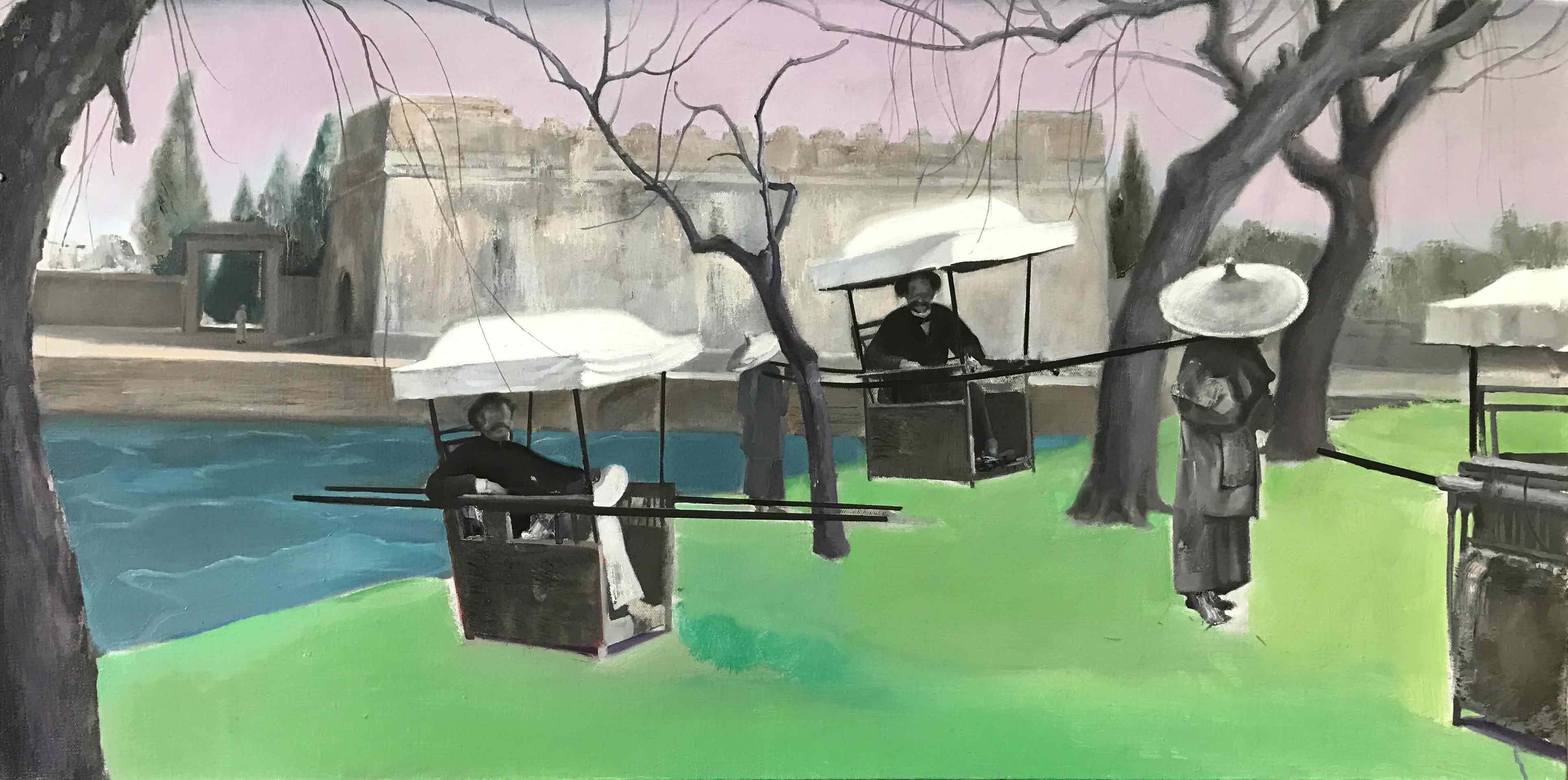
《微风》120X60CM布面油画2017年
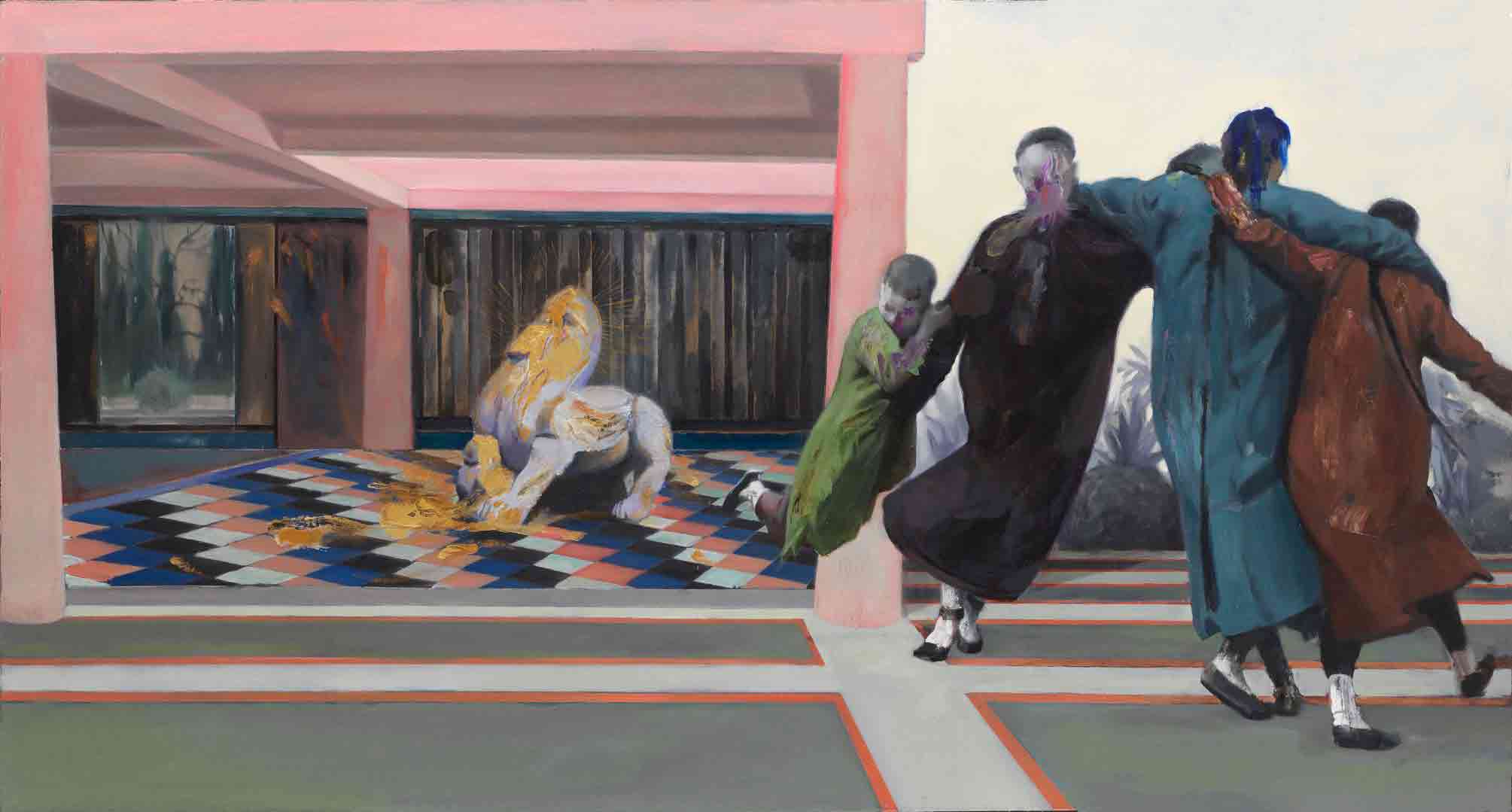
《辛亥一一脚步》120X70CM布面油画 2016年
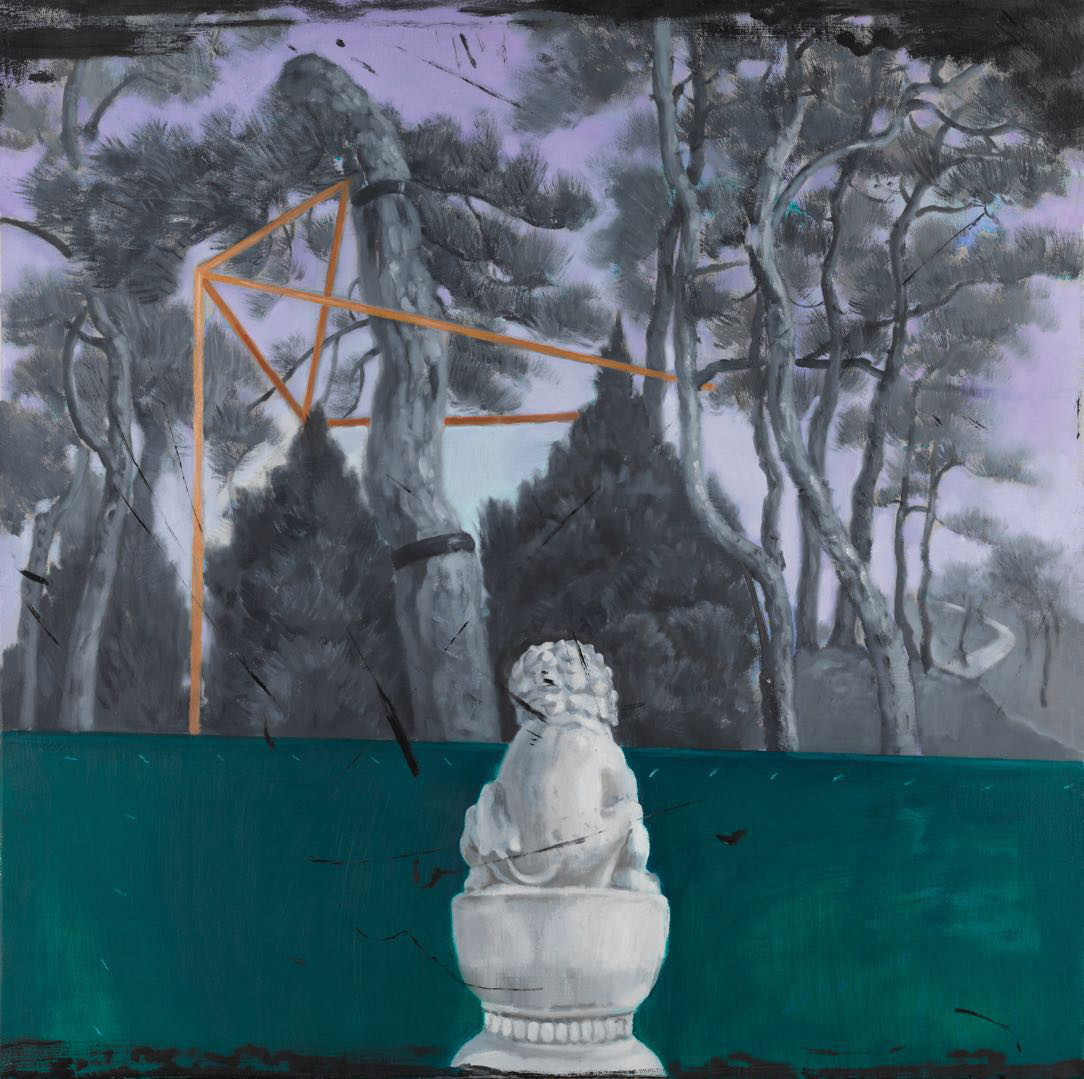
《遥望者》90X90CM布面油画2016年
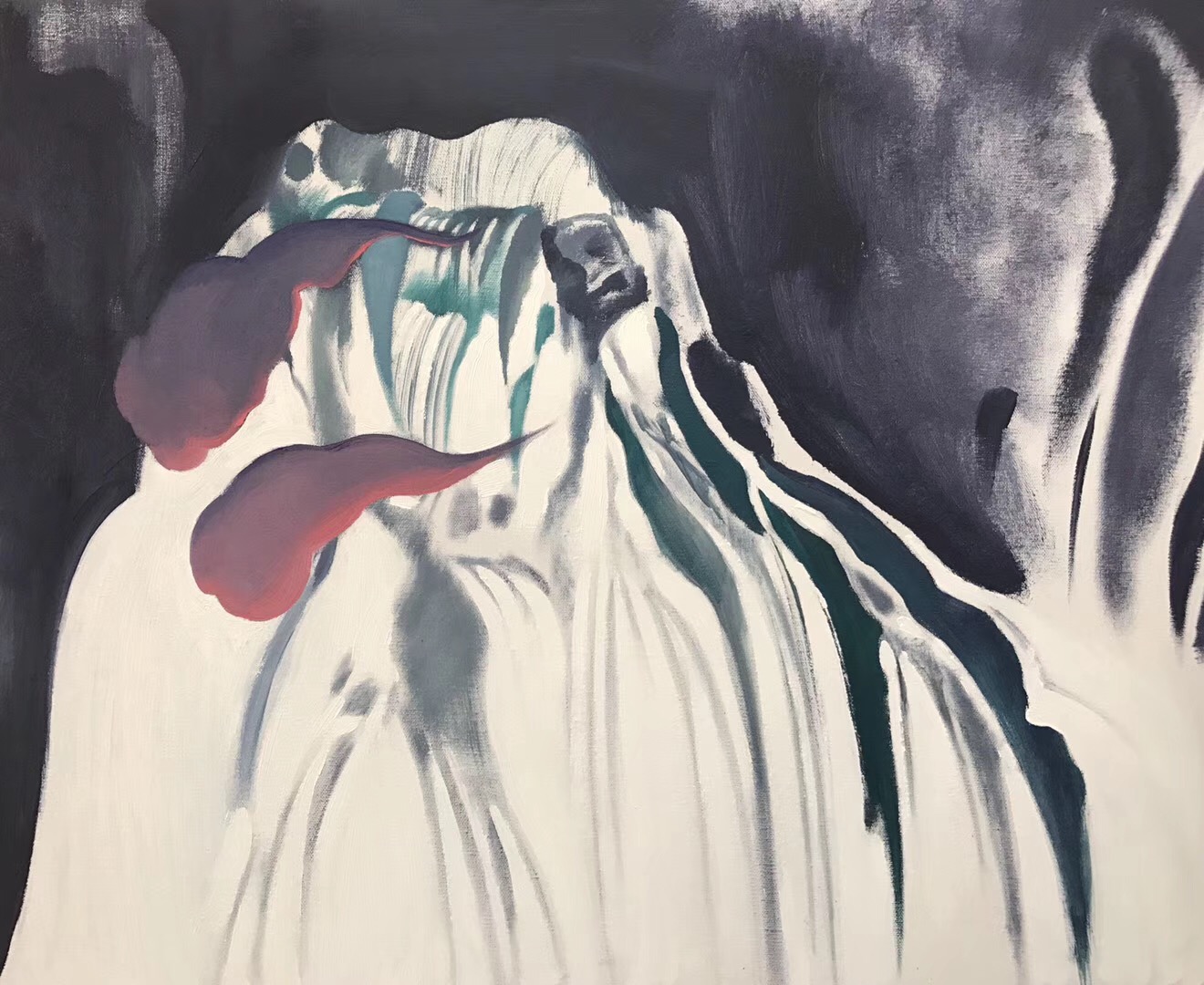
《悠远》50X60CM布面油画2019
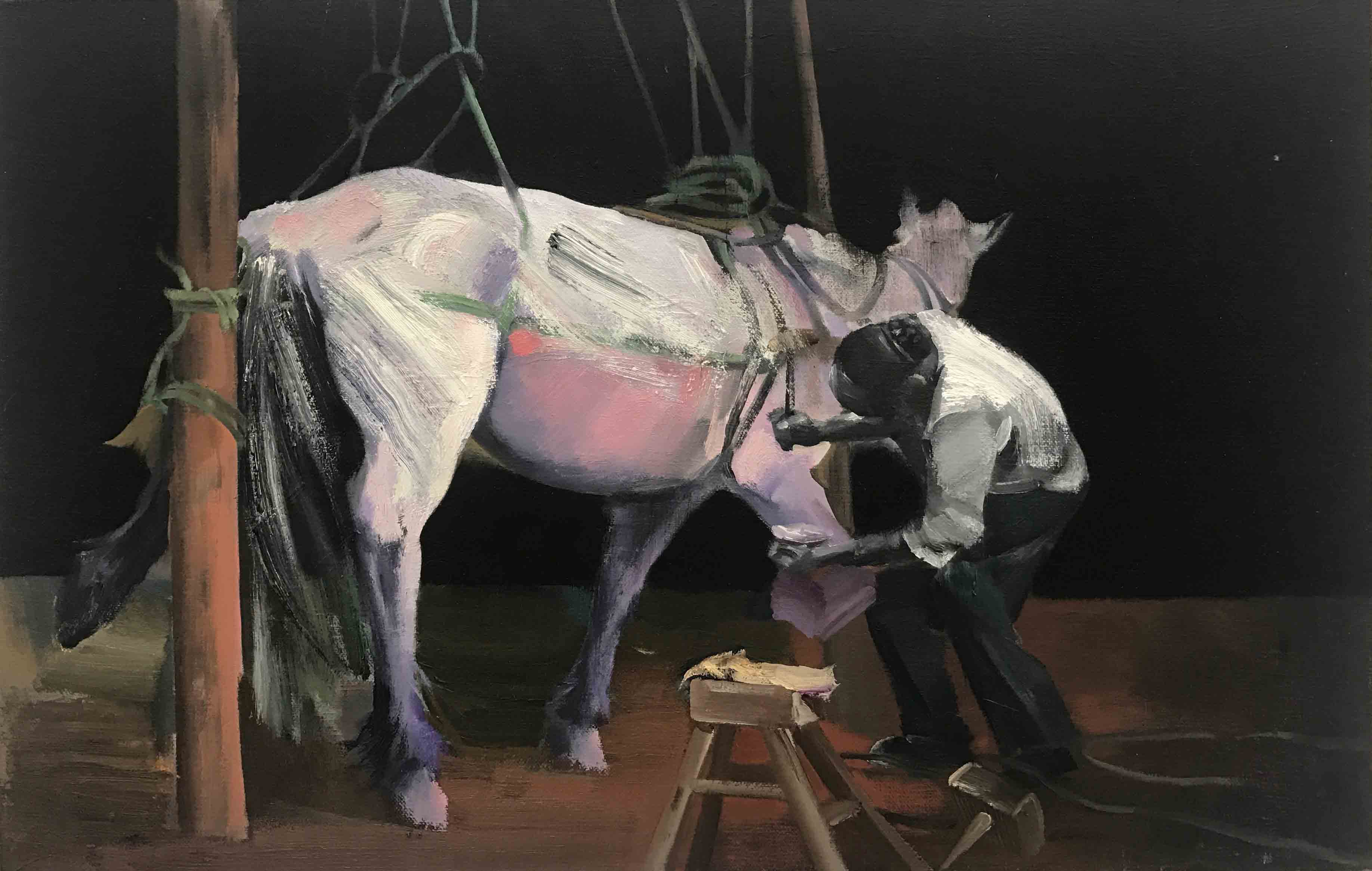
《长夜》50X70CM布面油画2019年
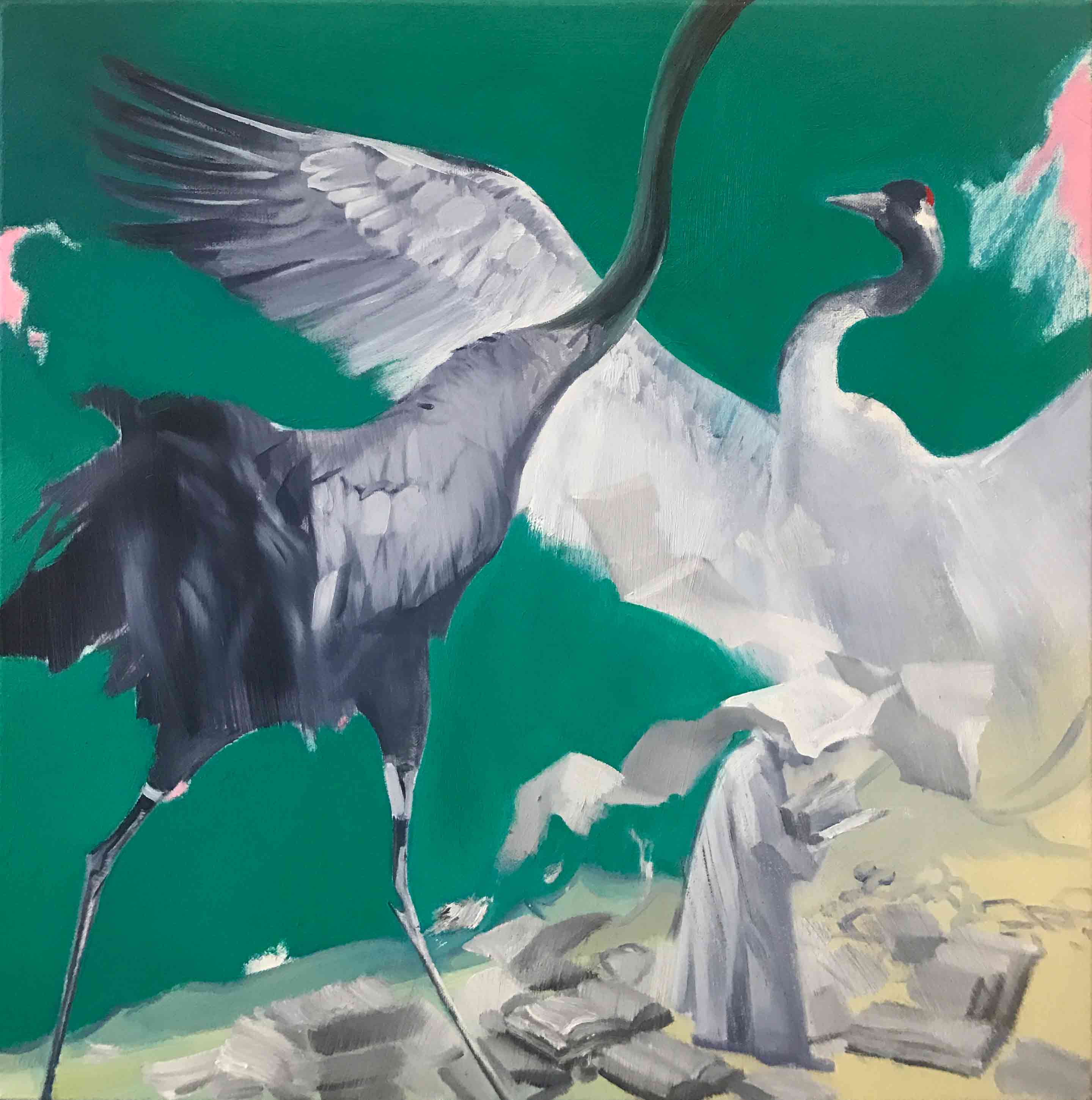
《之乎者也》40X40CM布面油画 2019年
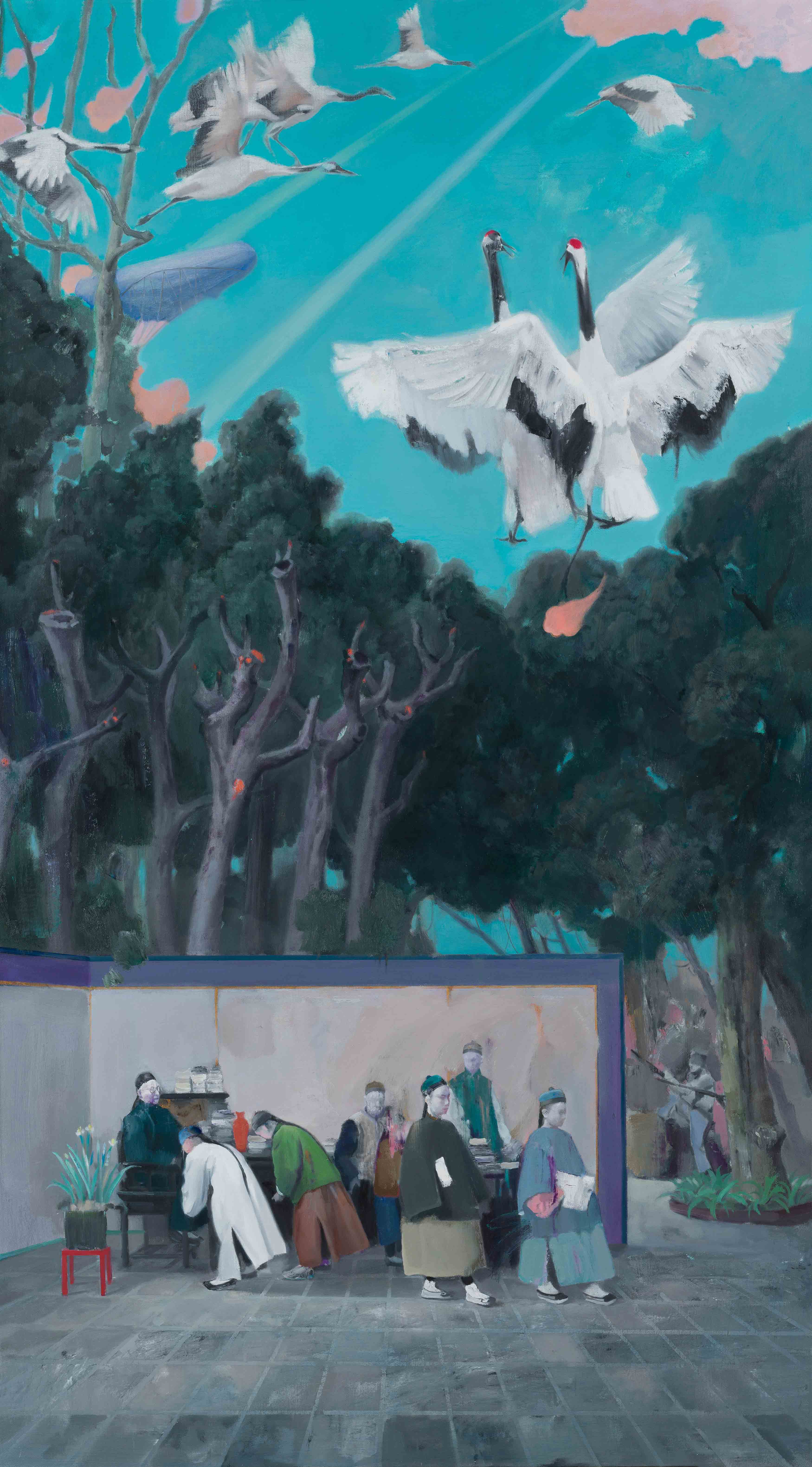
《执礼》180X100CM布面油画2017年
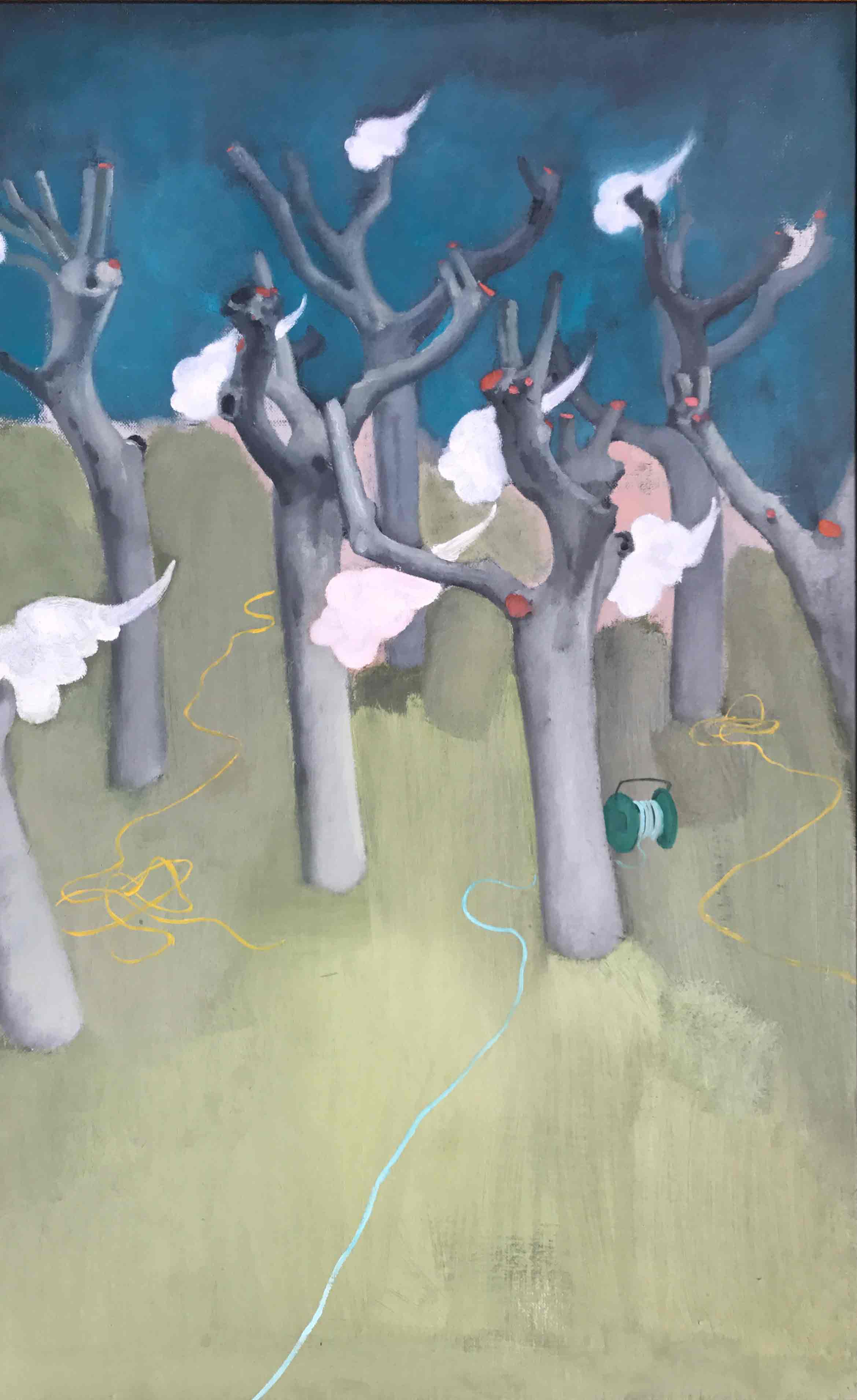
《伫立》80X30CM布面油画2017年
北京巴黎拉力赛系列
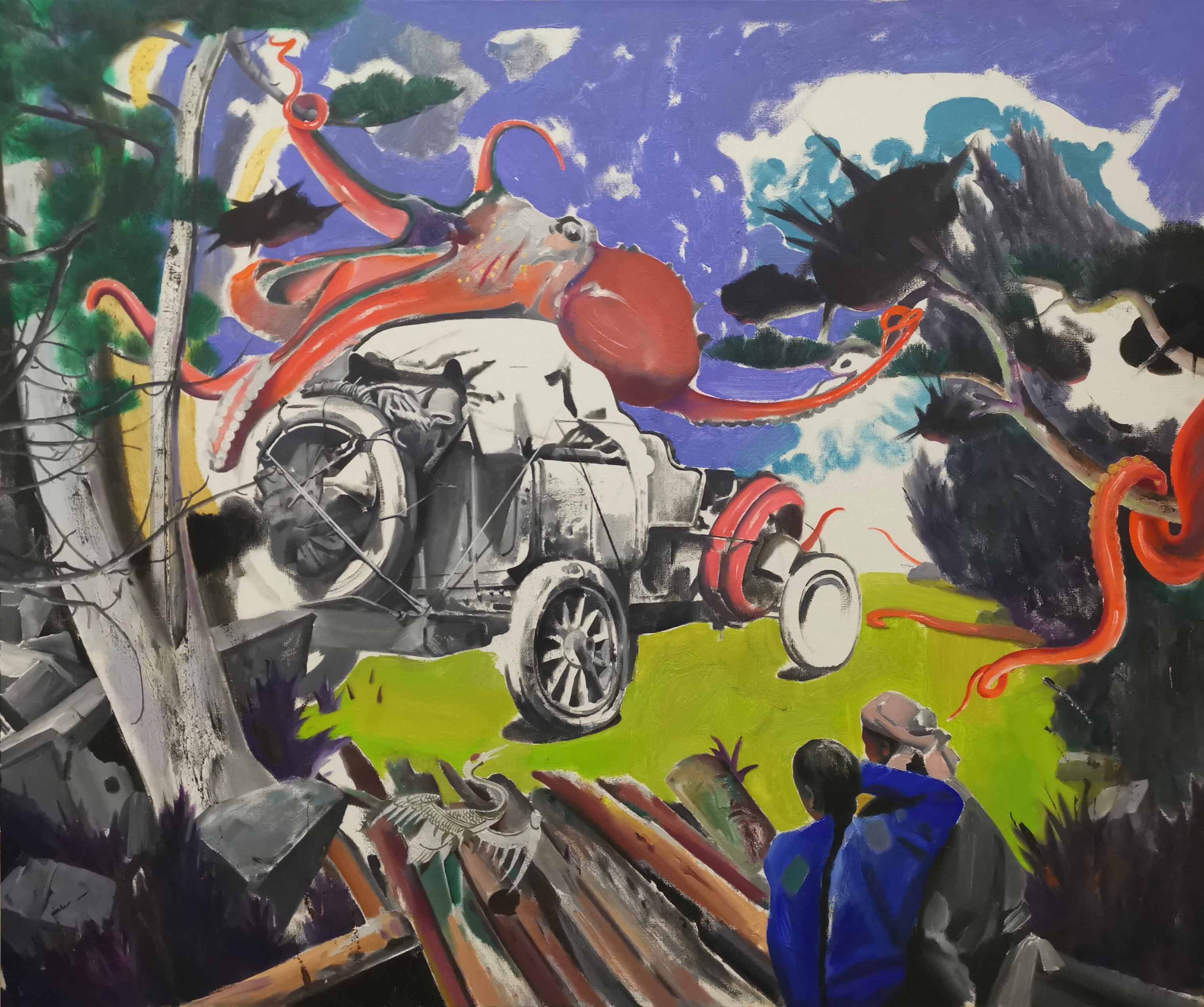
《北京巴黎拉力赛一一新生》120X100CM 布面油画 2020年
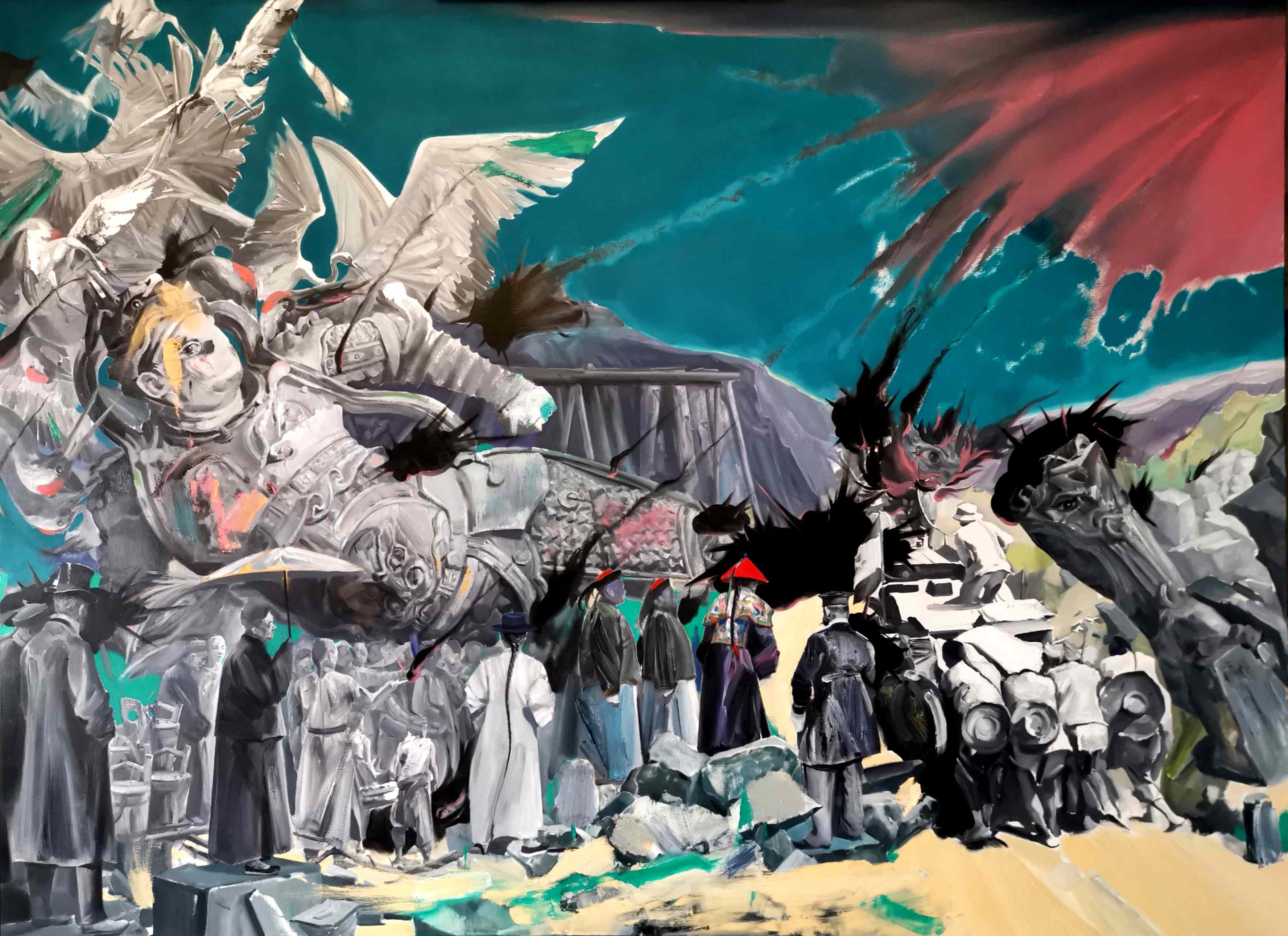
《北京巴黎拉力赛一一眼睛》197X145CM 布面油画 2020年
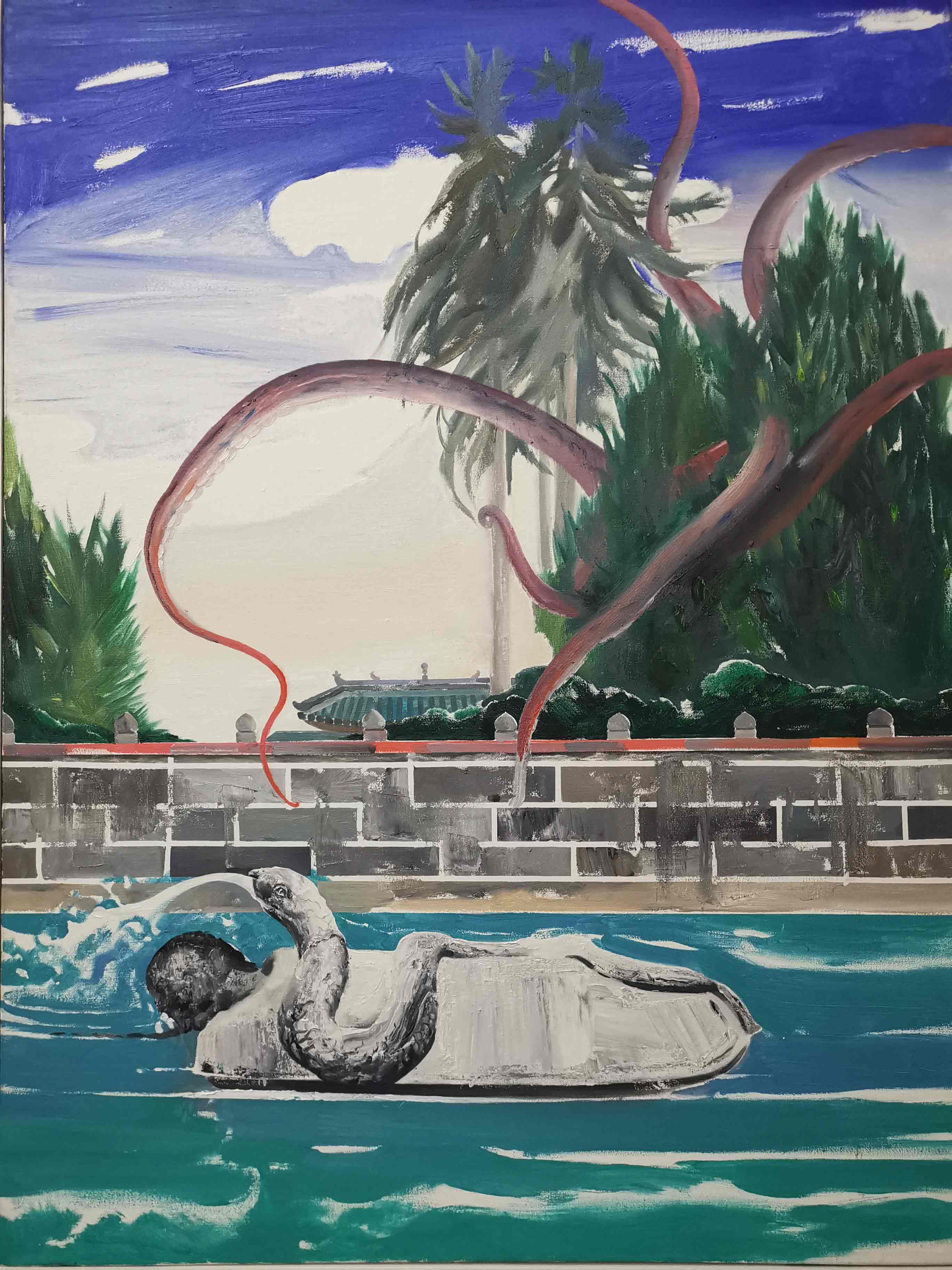
《北京巴黎拉力赛一一异变》120X100CM 布面油画 2020年
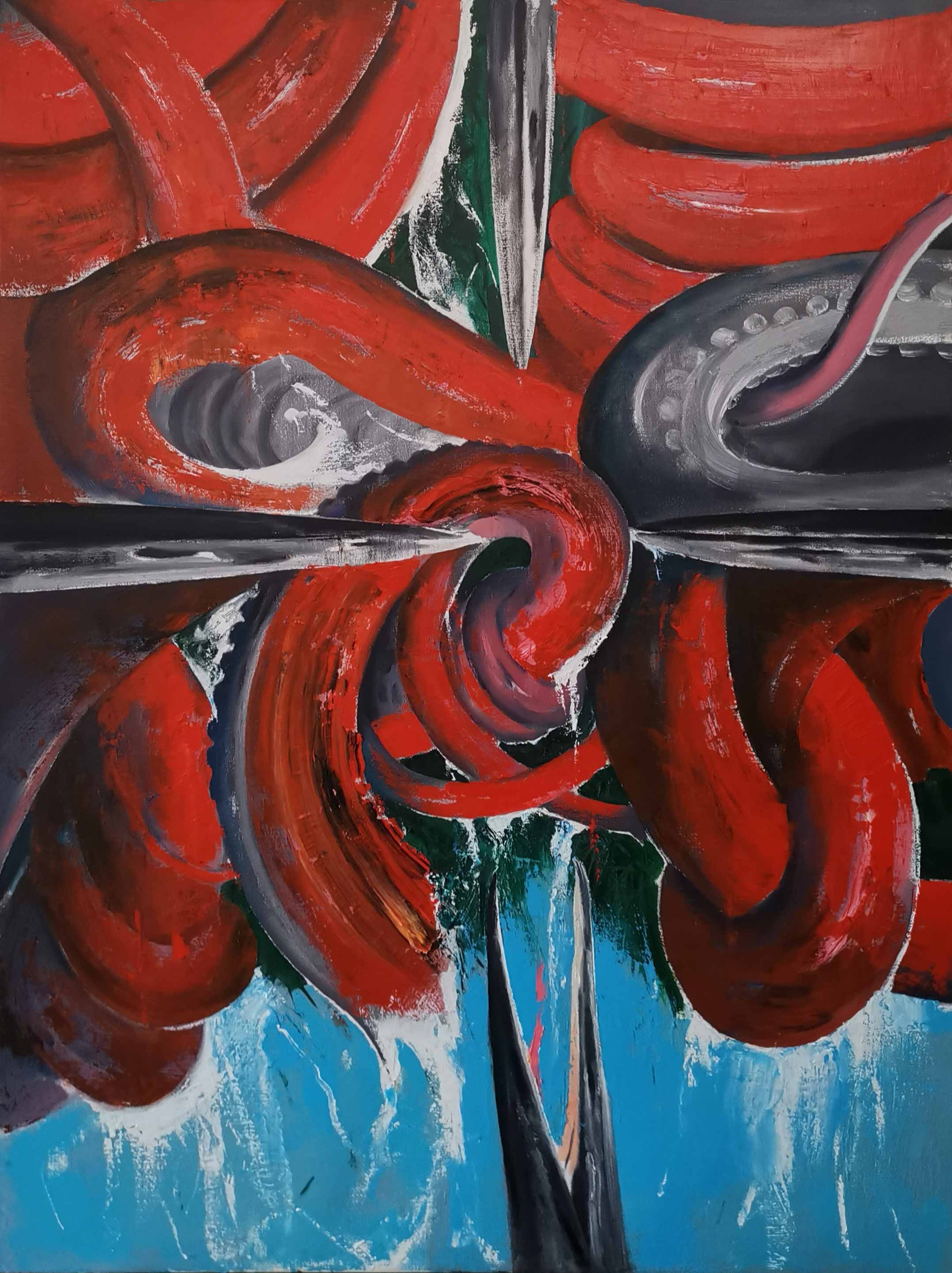
《北京巴黎拉力赛一一中国红》120X100CM 布面油画 2020年
袁世凯系列
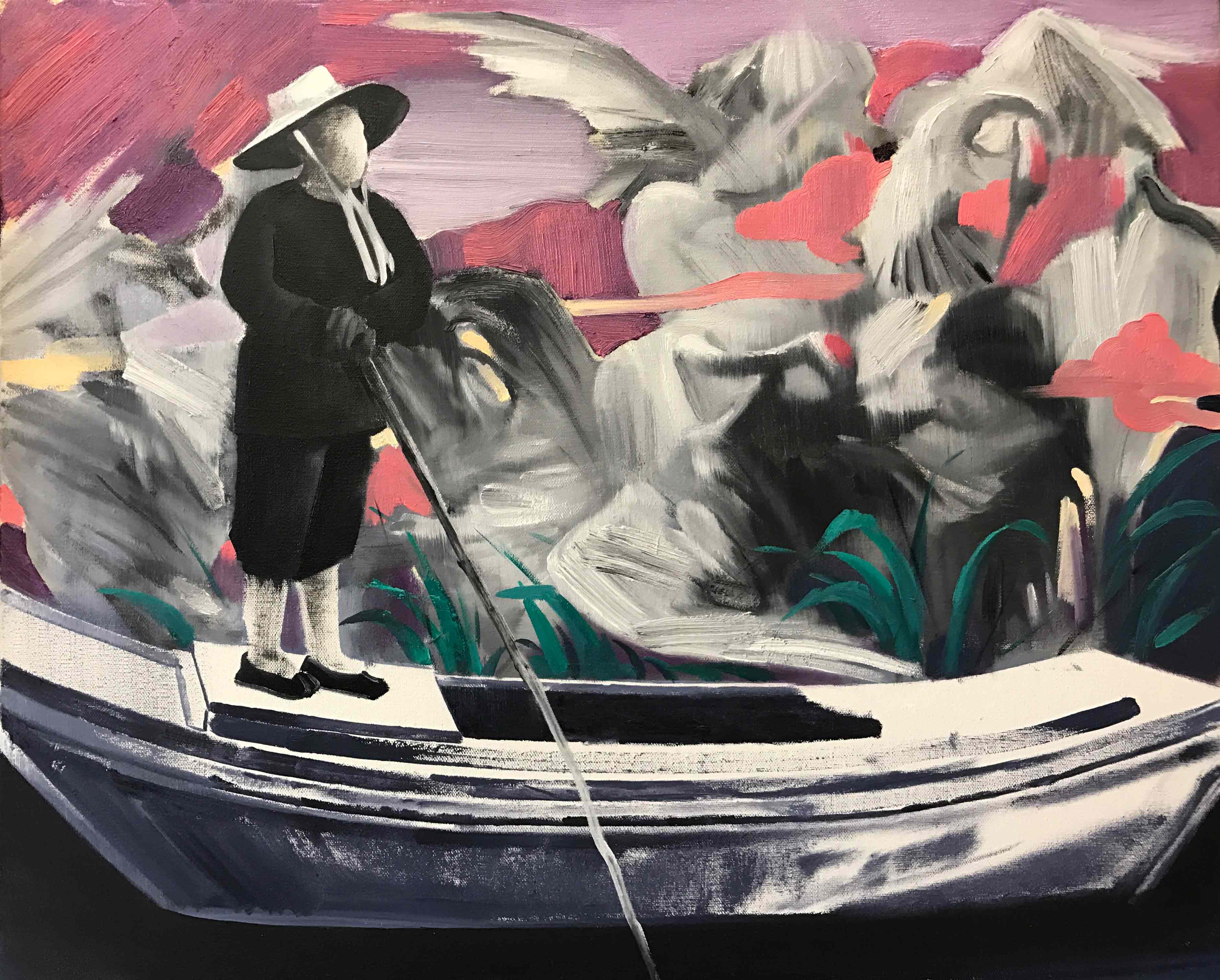
《洹上村的闲云野鹤》50X60CM布面油画 2019
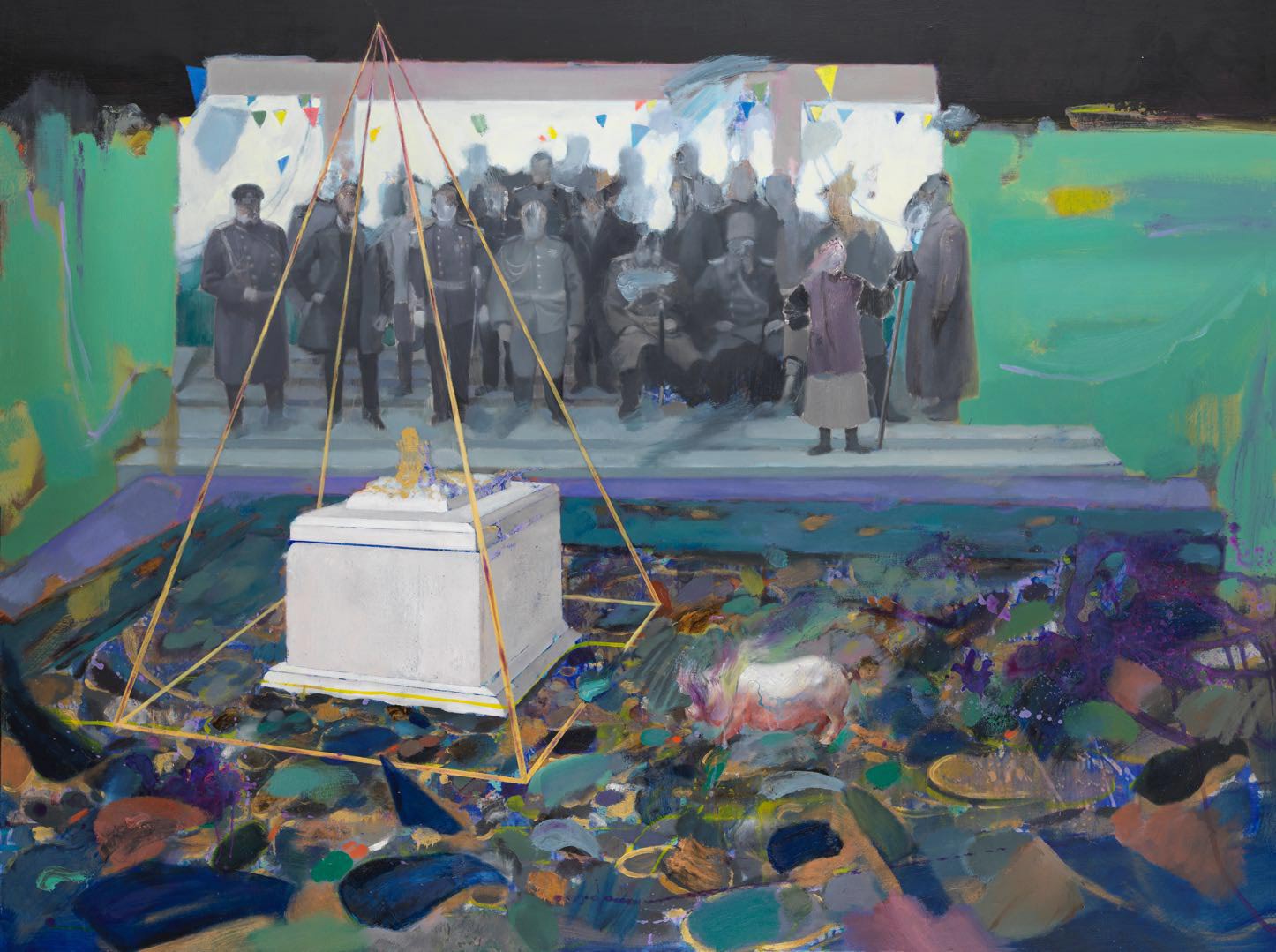
《台下》160X120CM布面油画 2017年
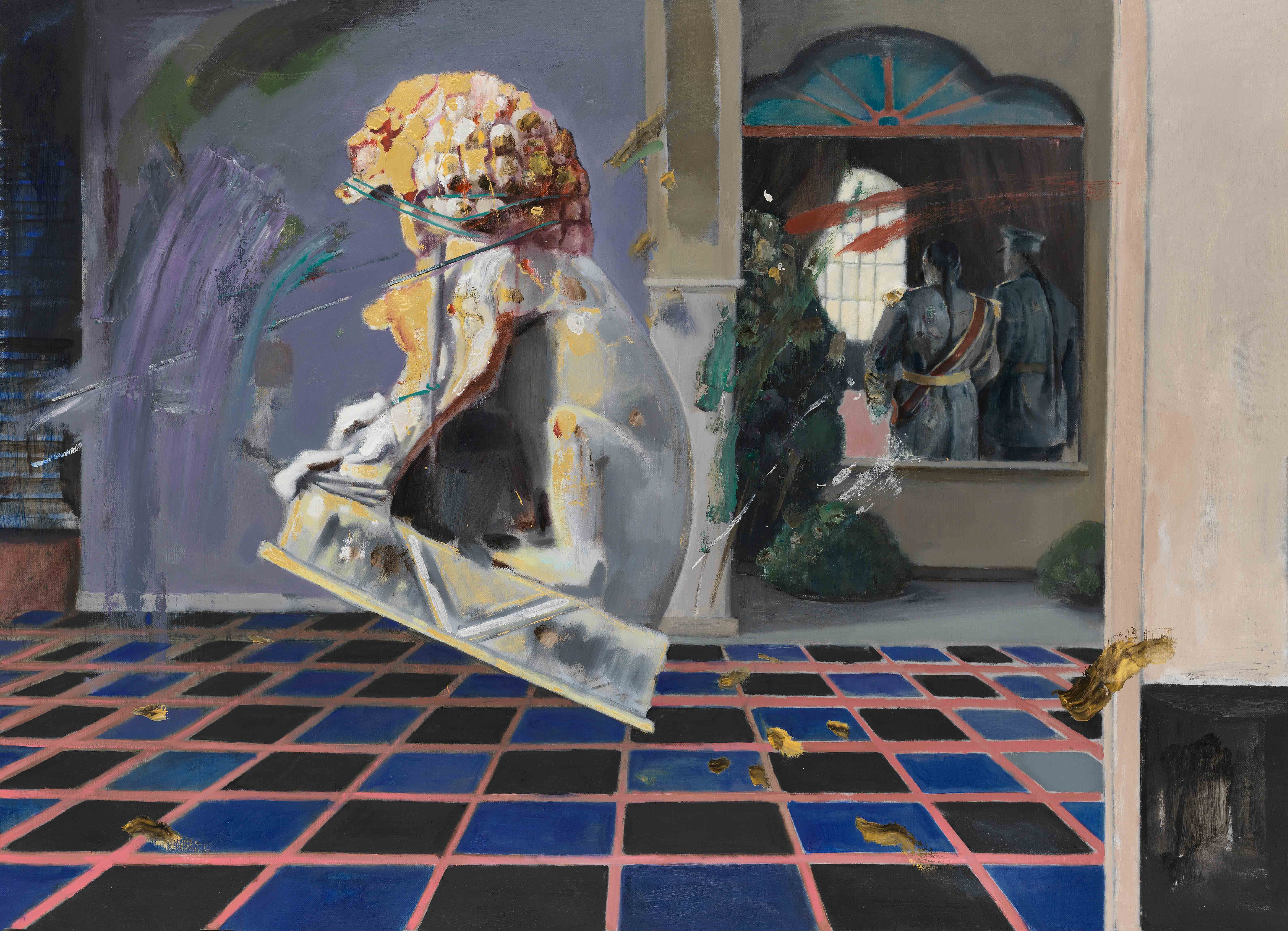
《辛亥一一剥落》120X90CM布面油画2017
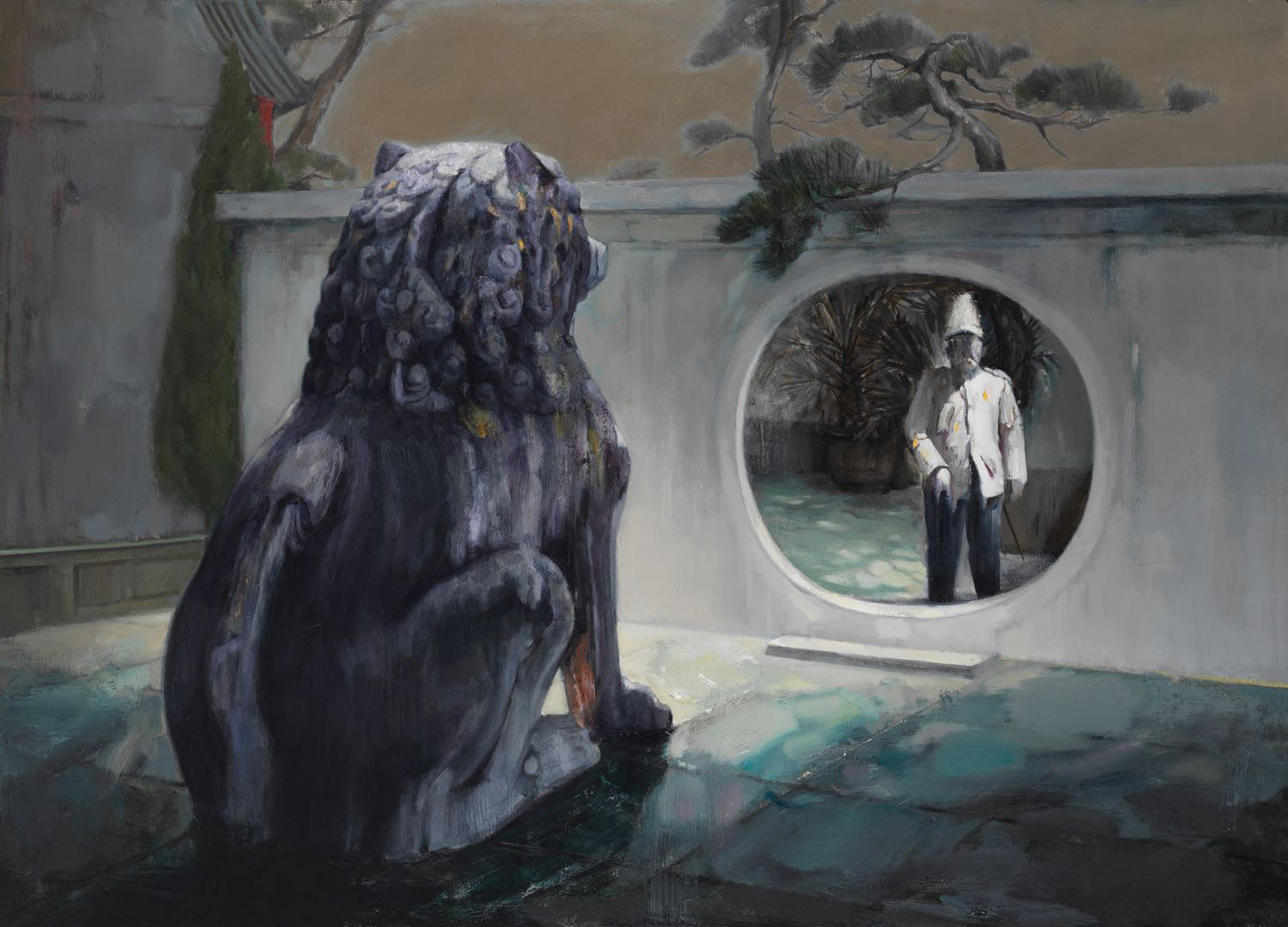
《移步》120X90CM布面油画 2016年
内容合作:
电话:18665691921/020—87381688
联系人:汤小姐 邮箱:2305366233@qq.com
地址:广州市越秀区广州大道中289号南方传媒大厦

